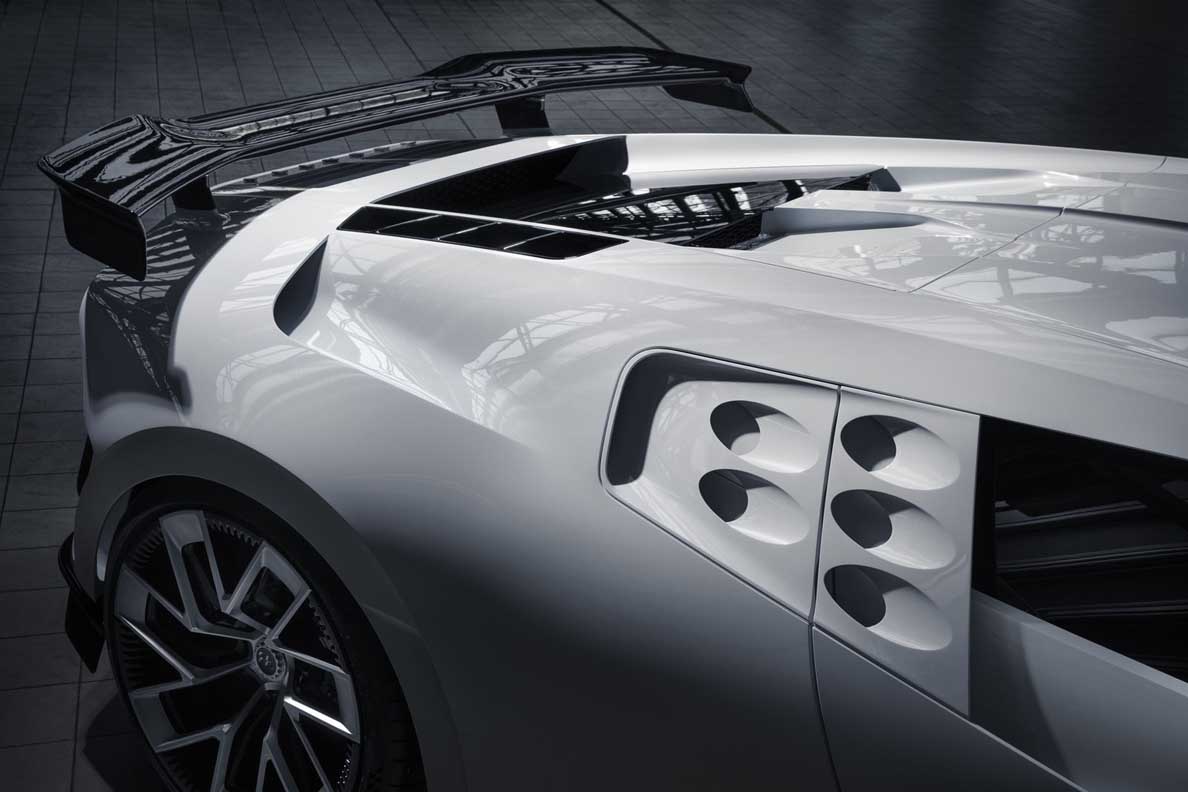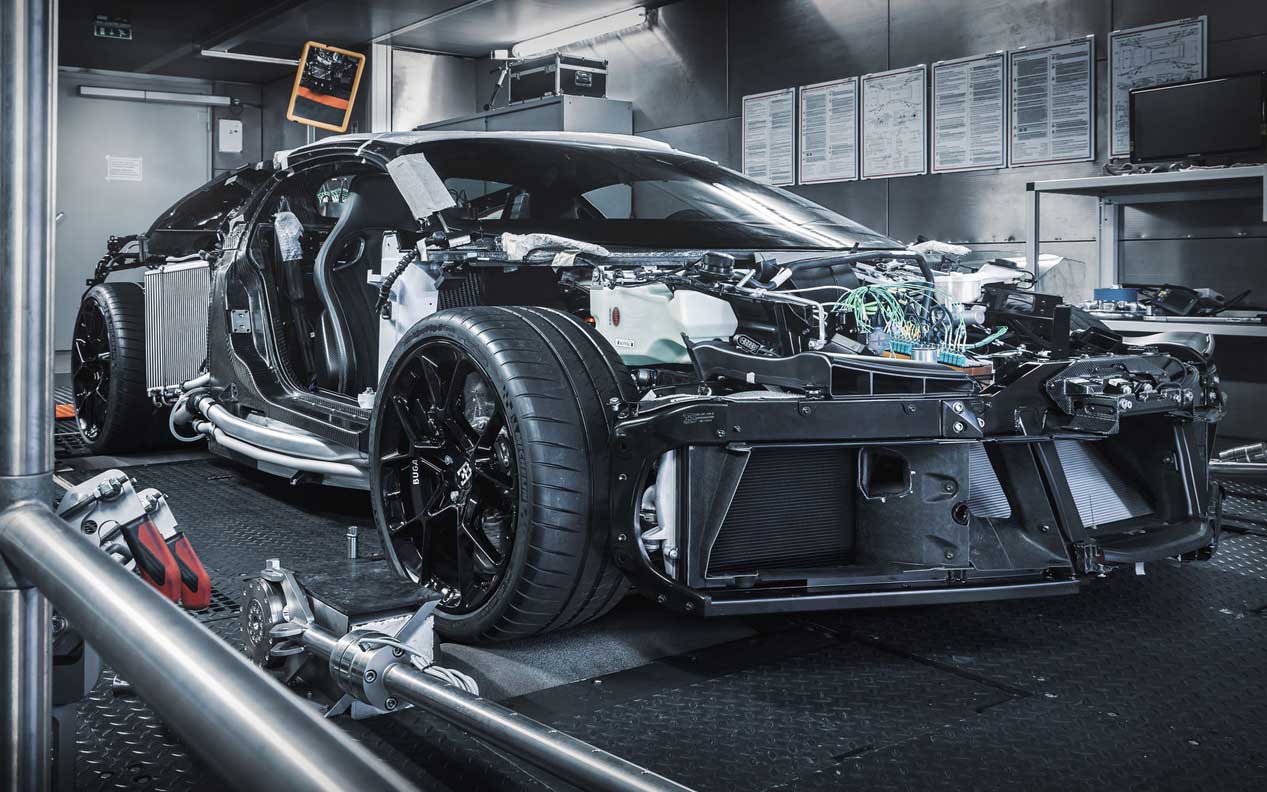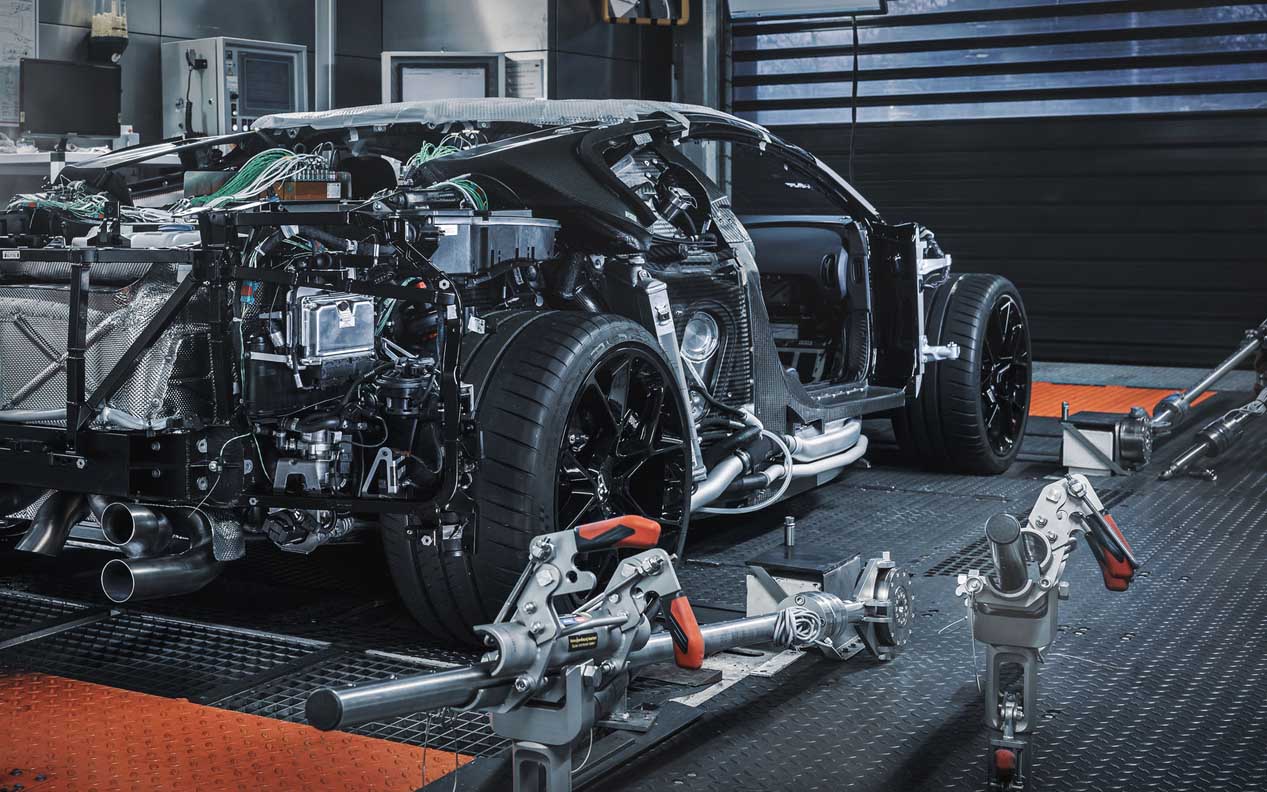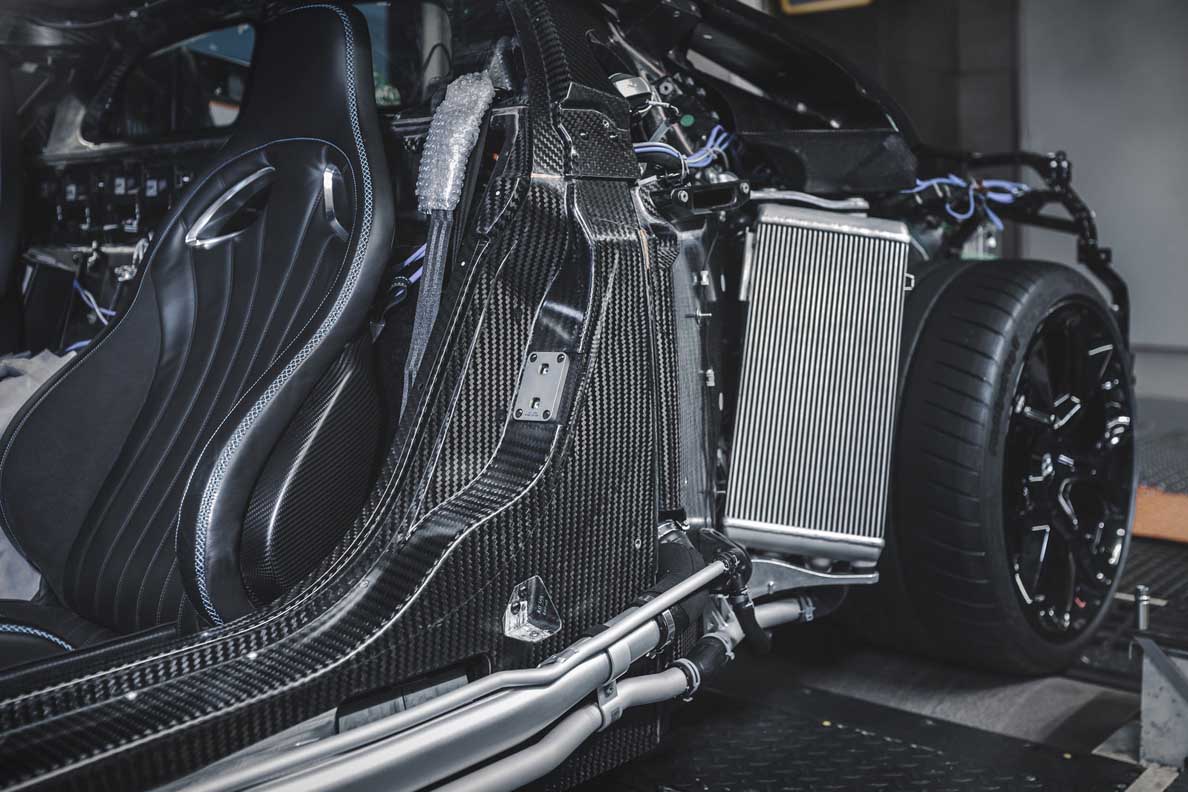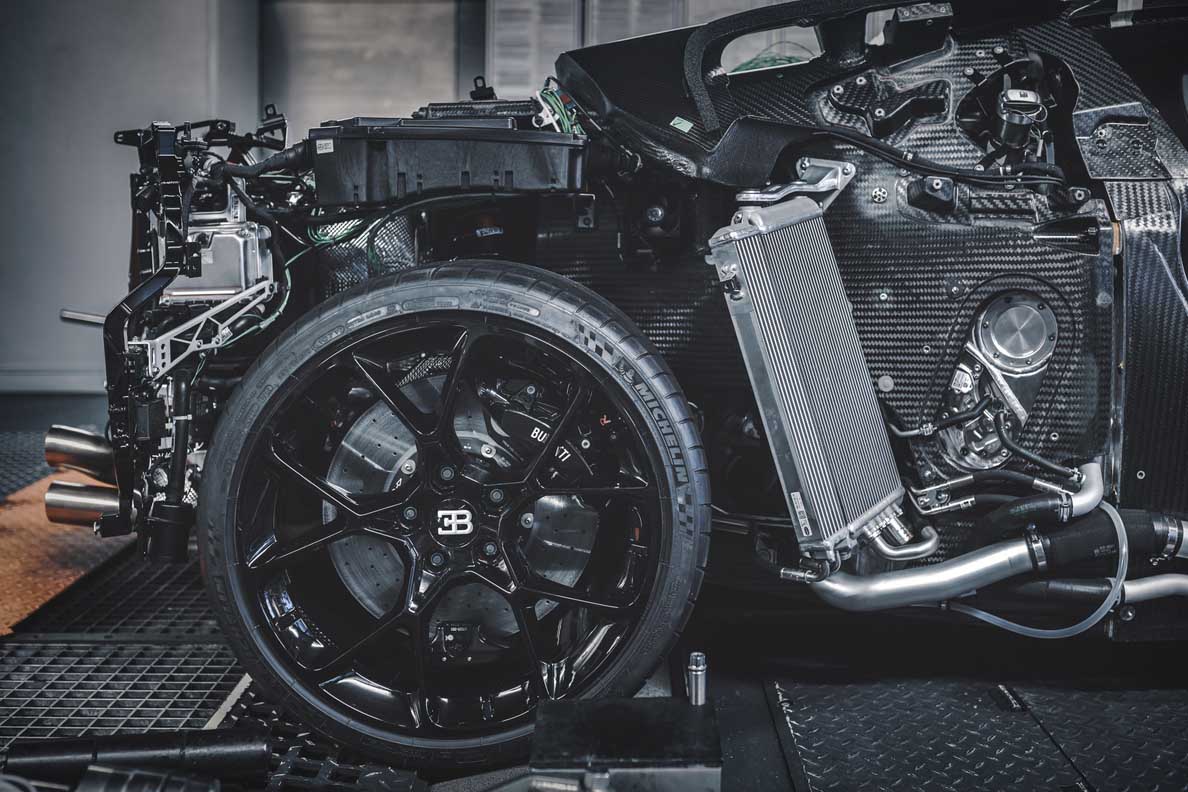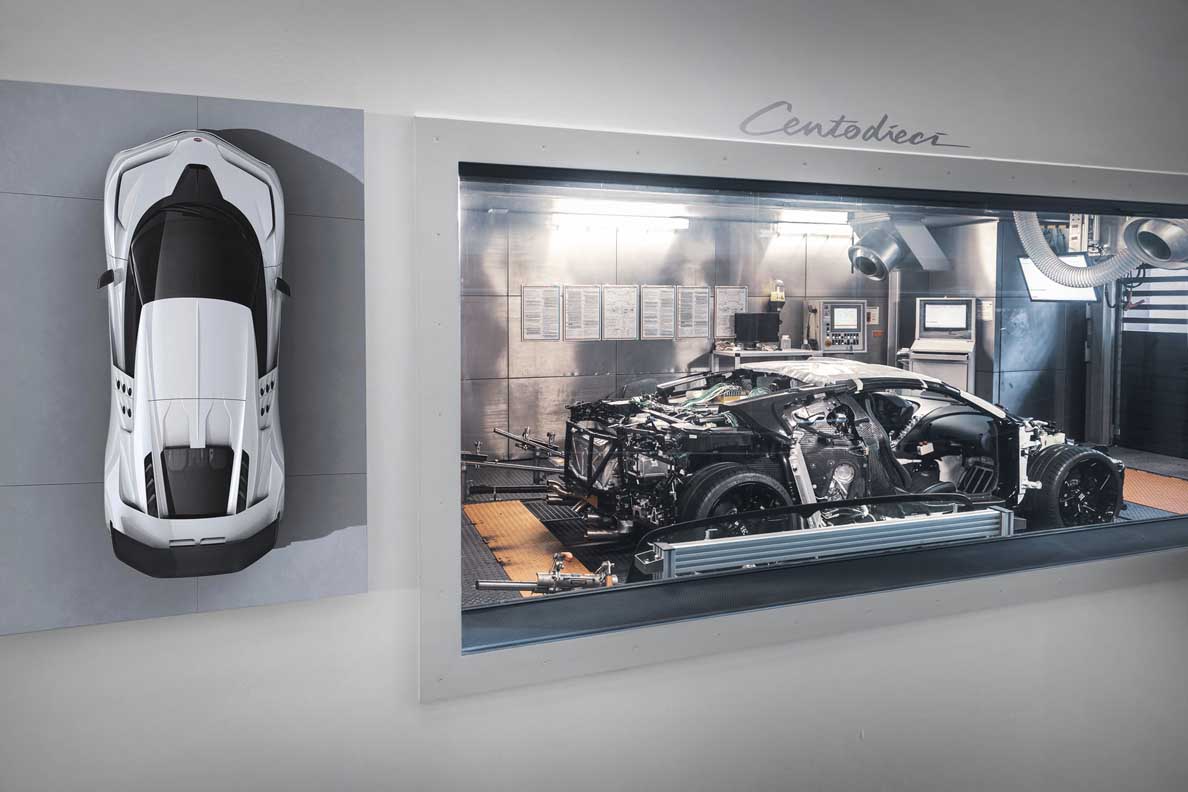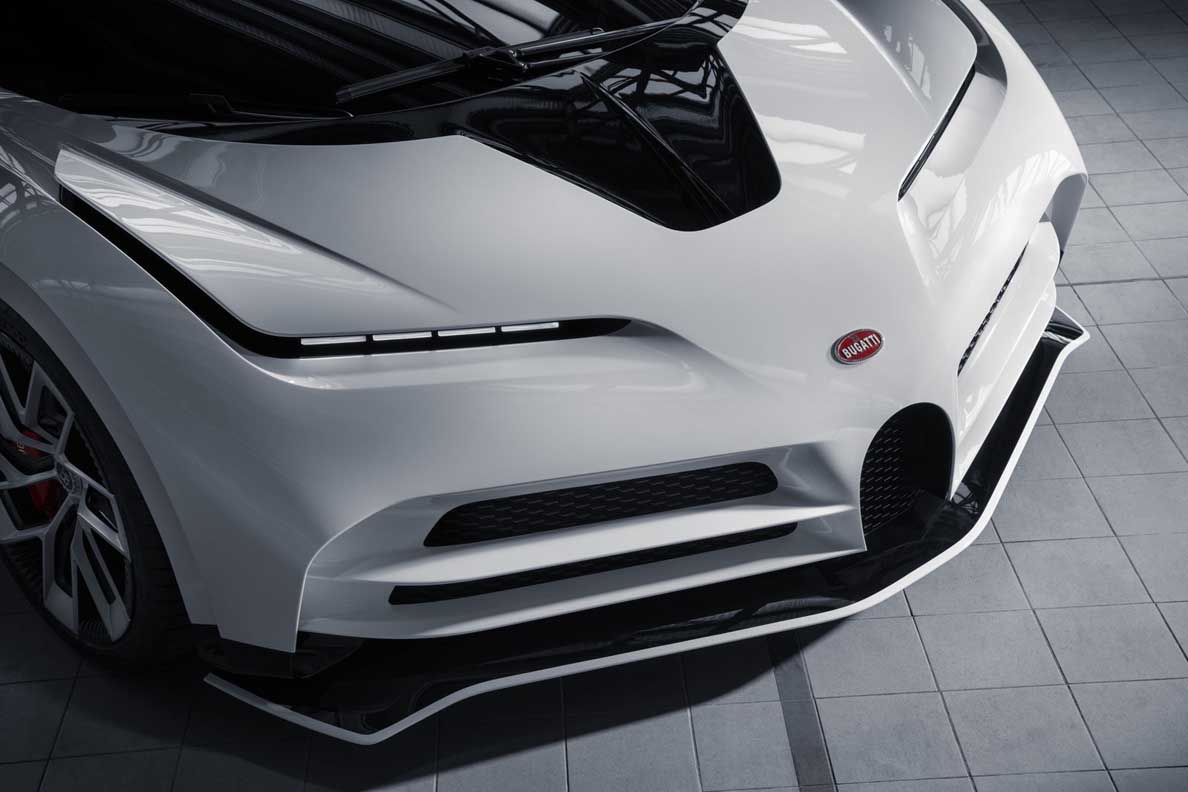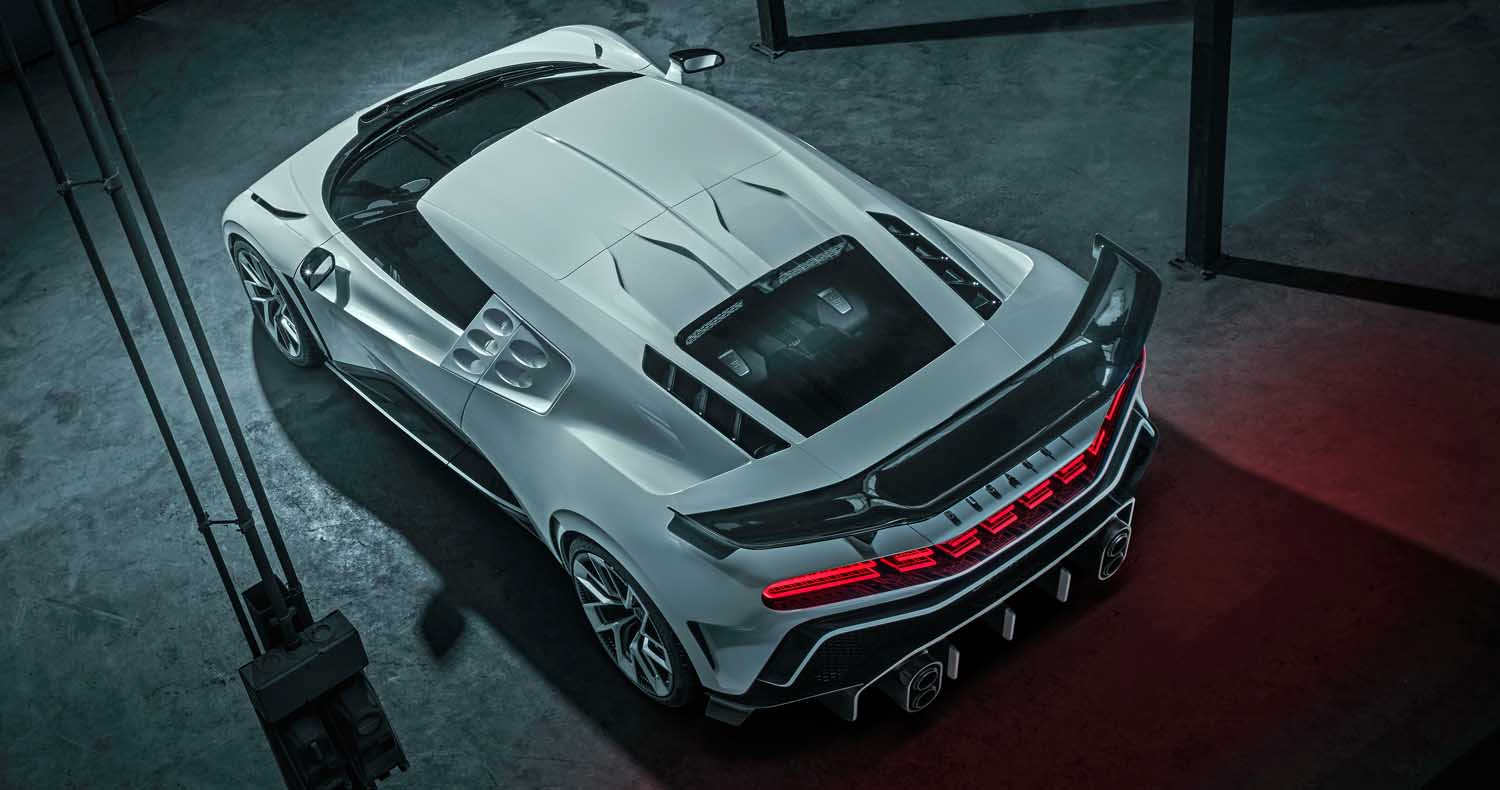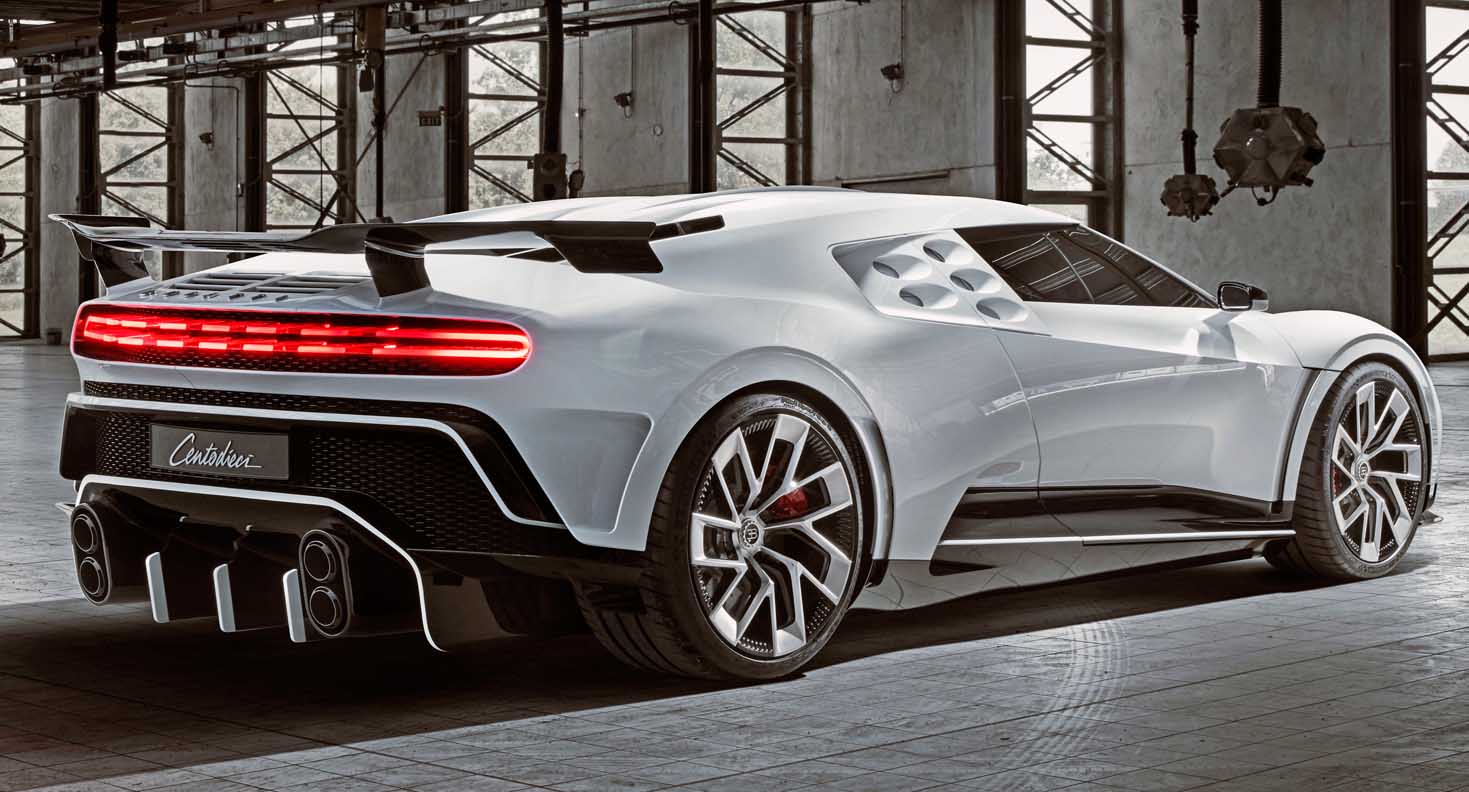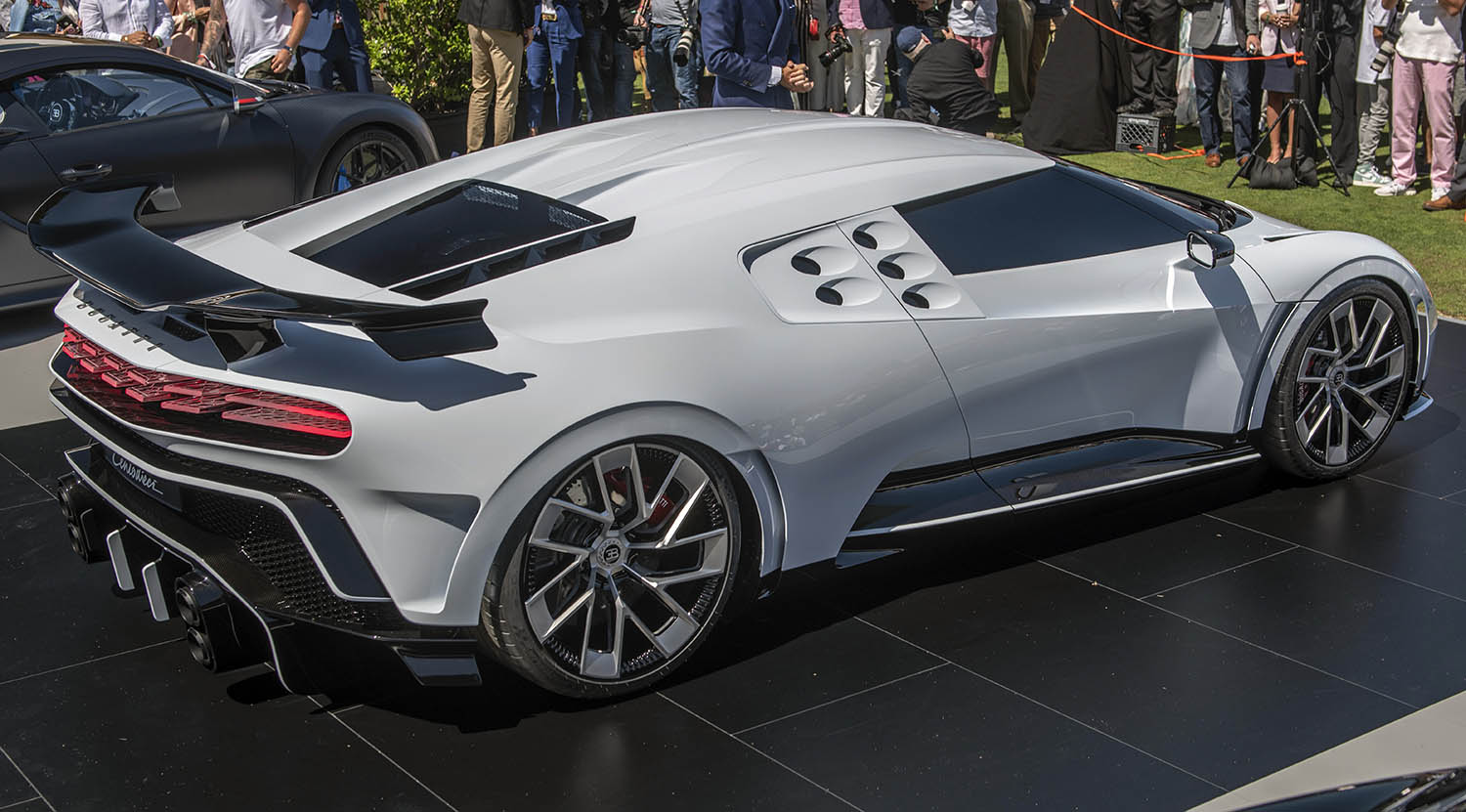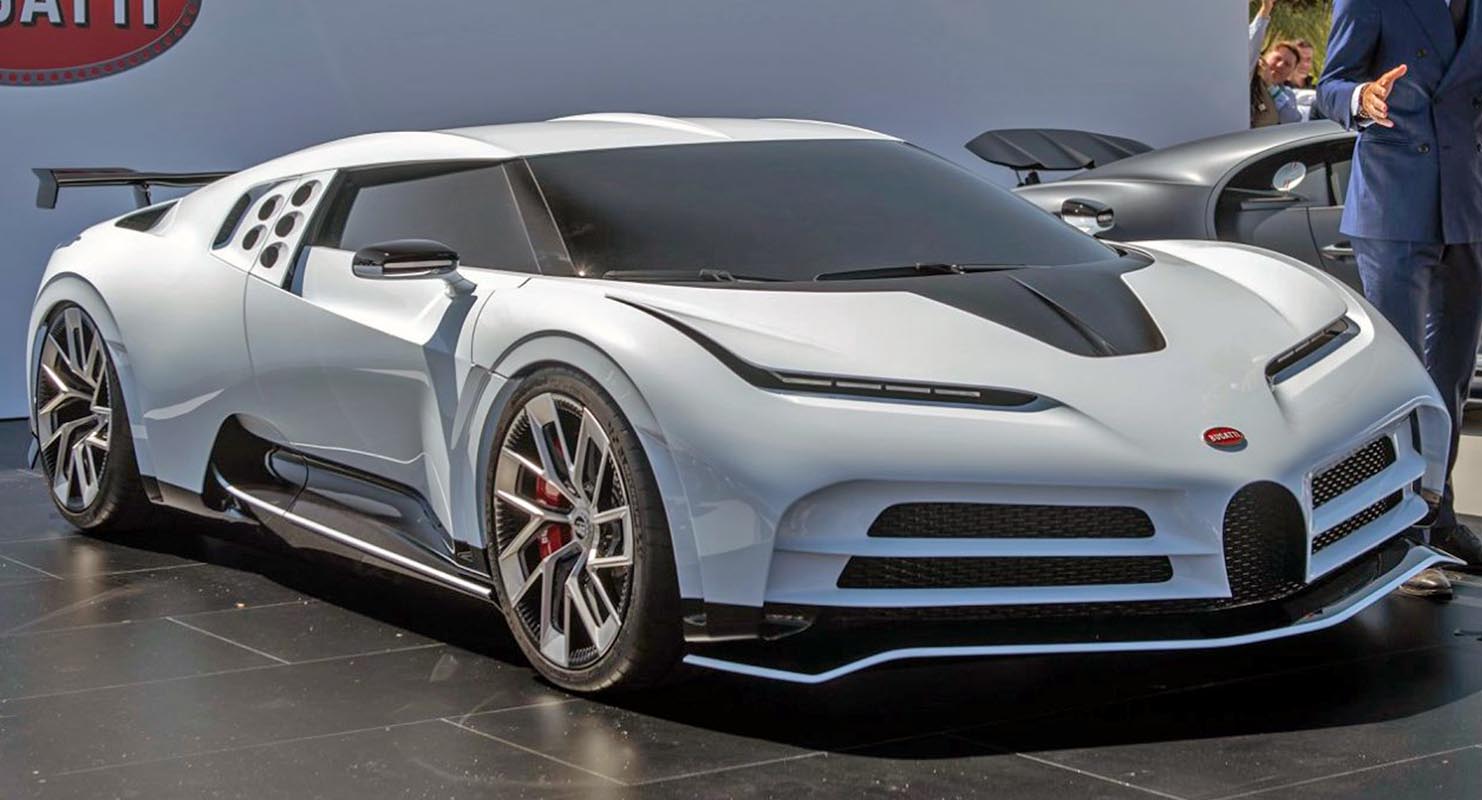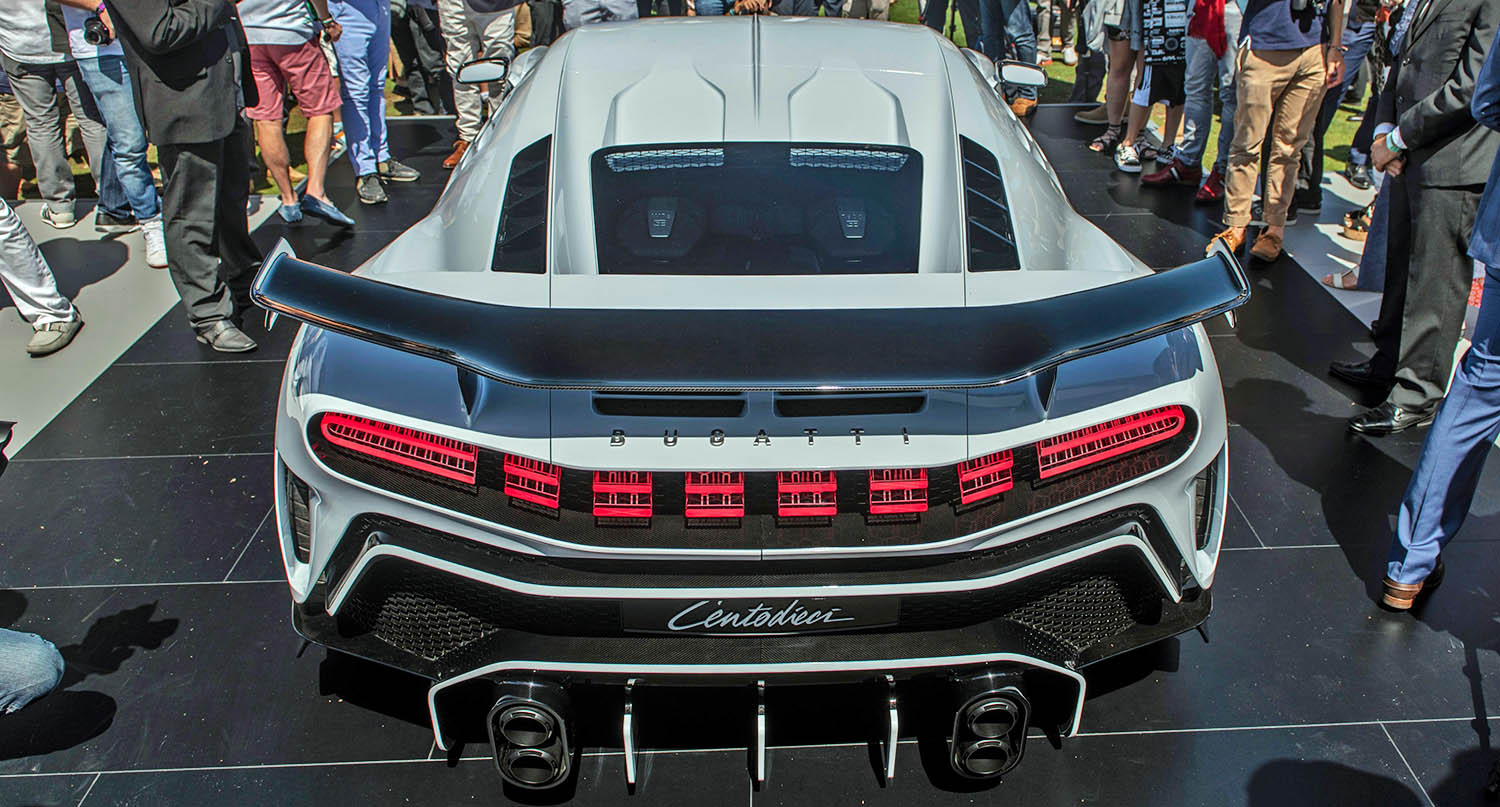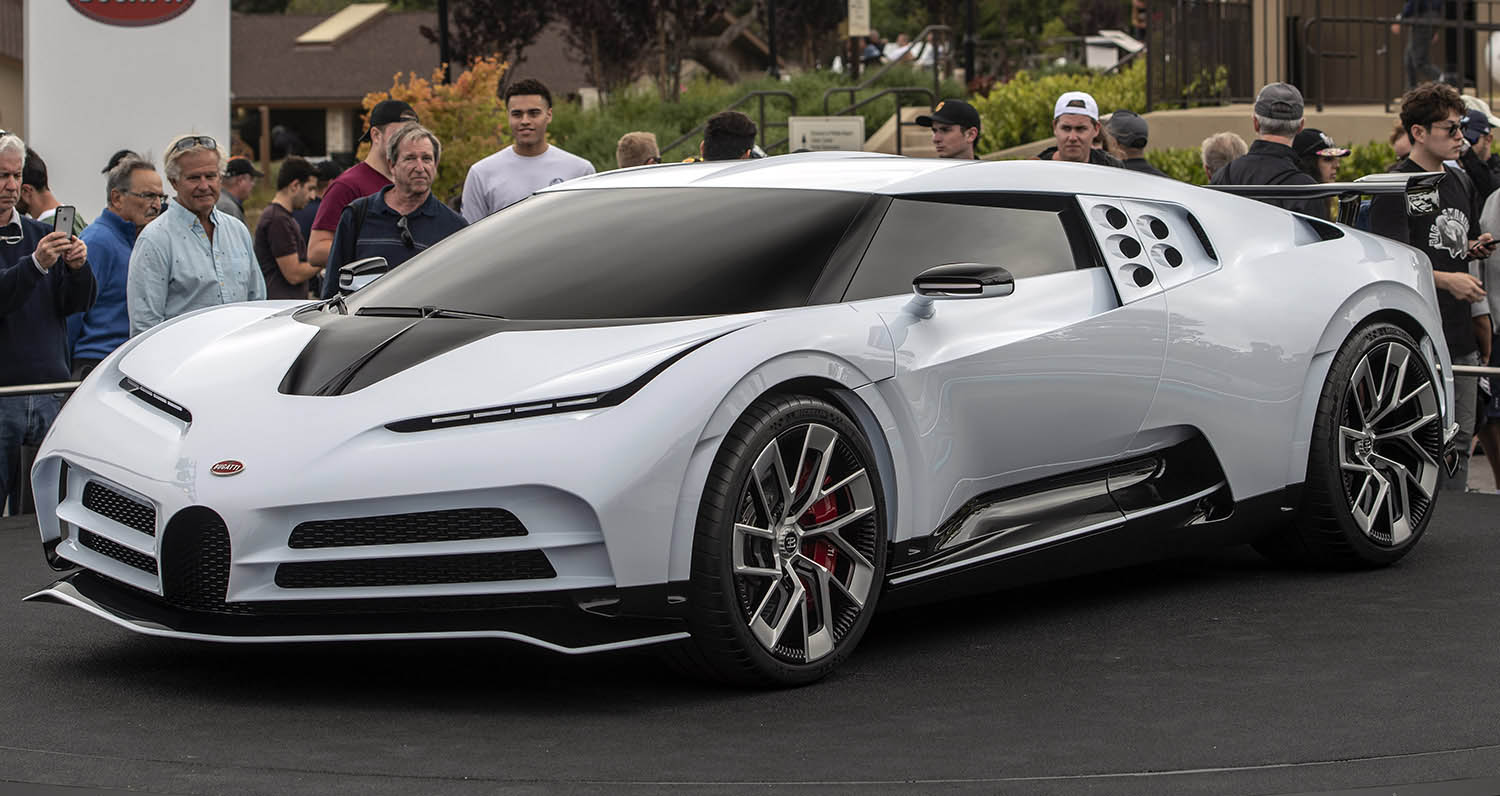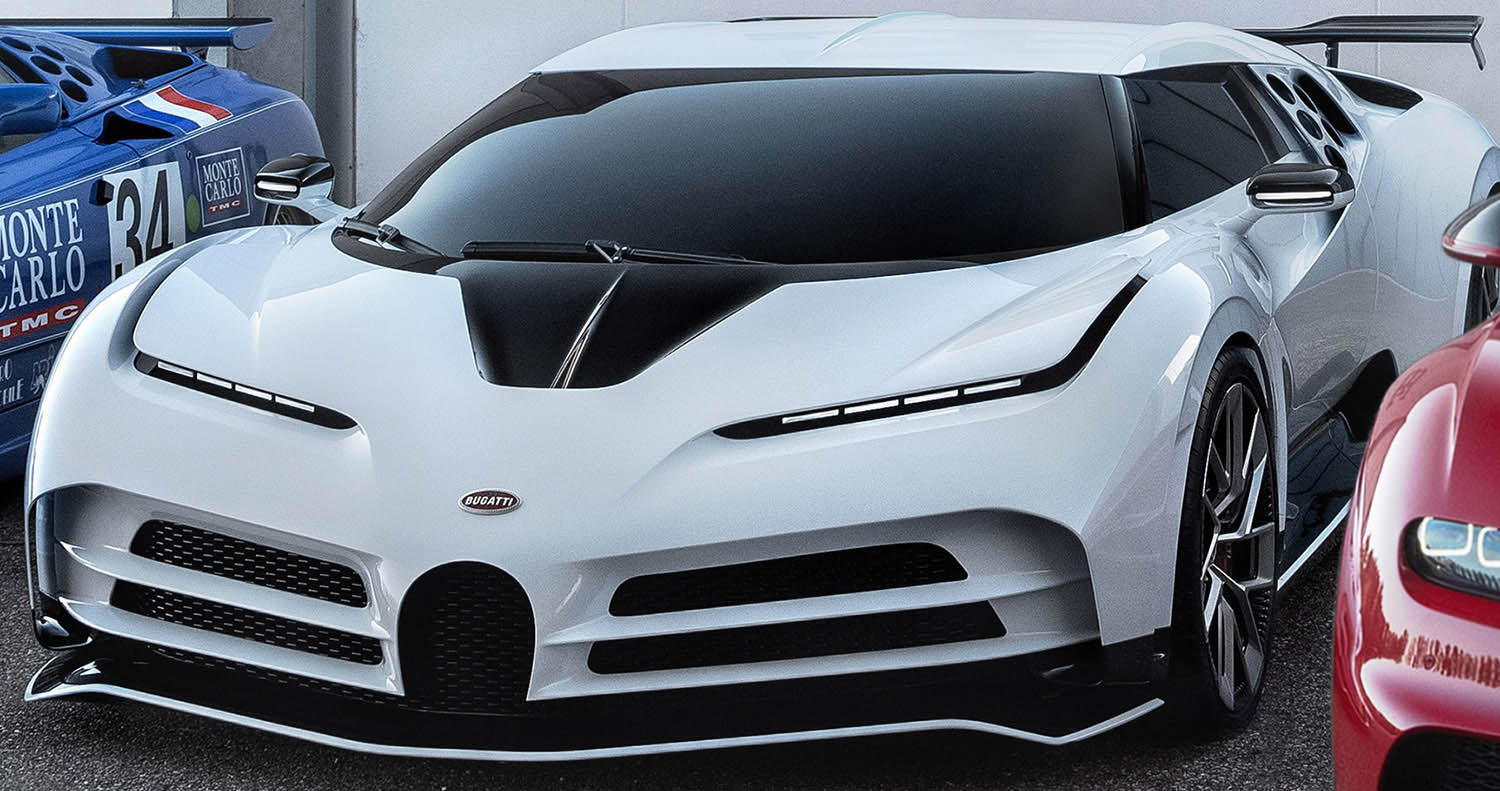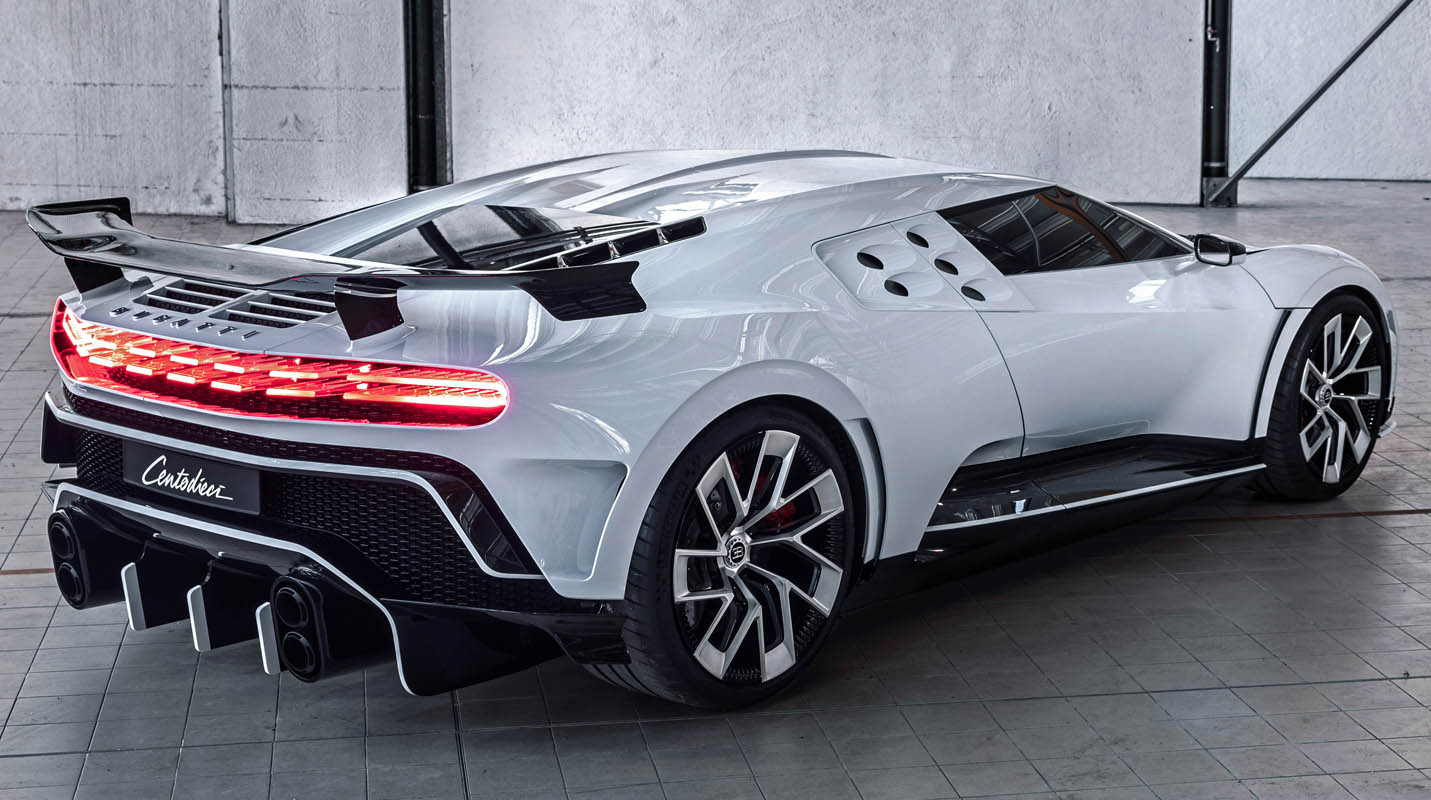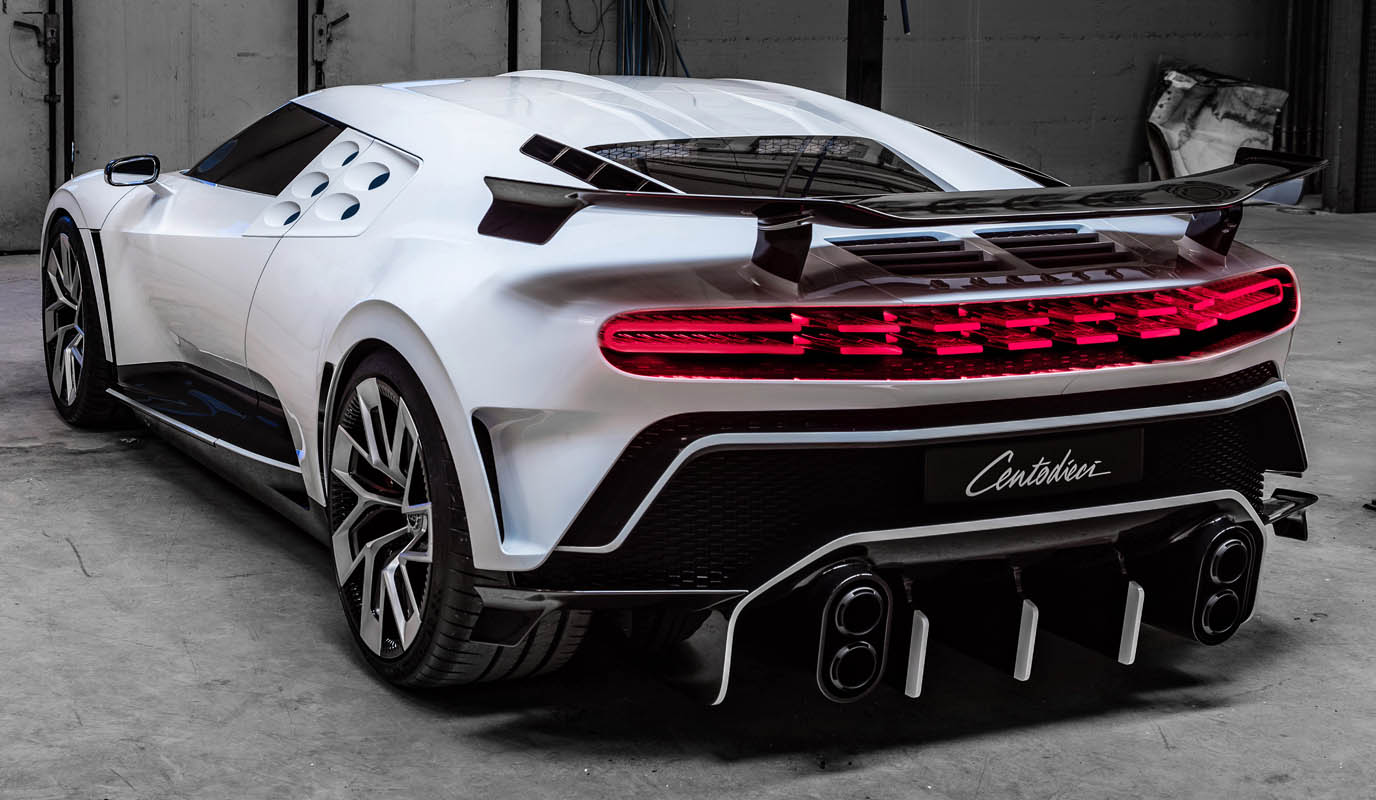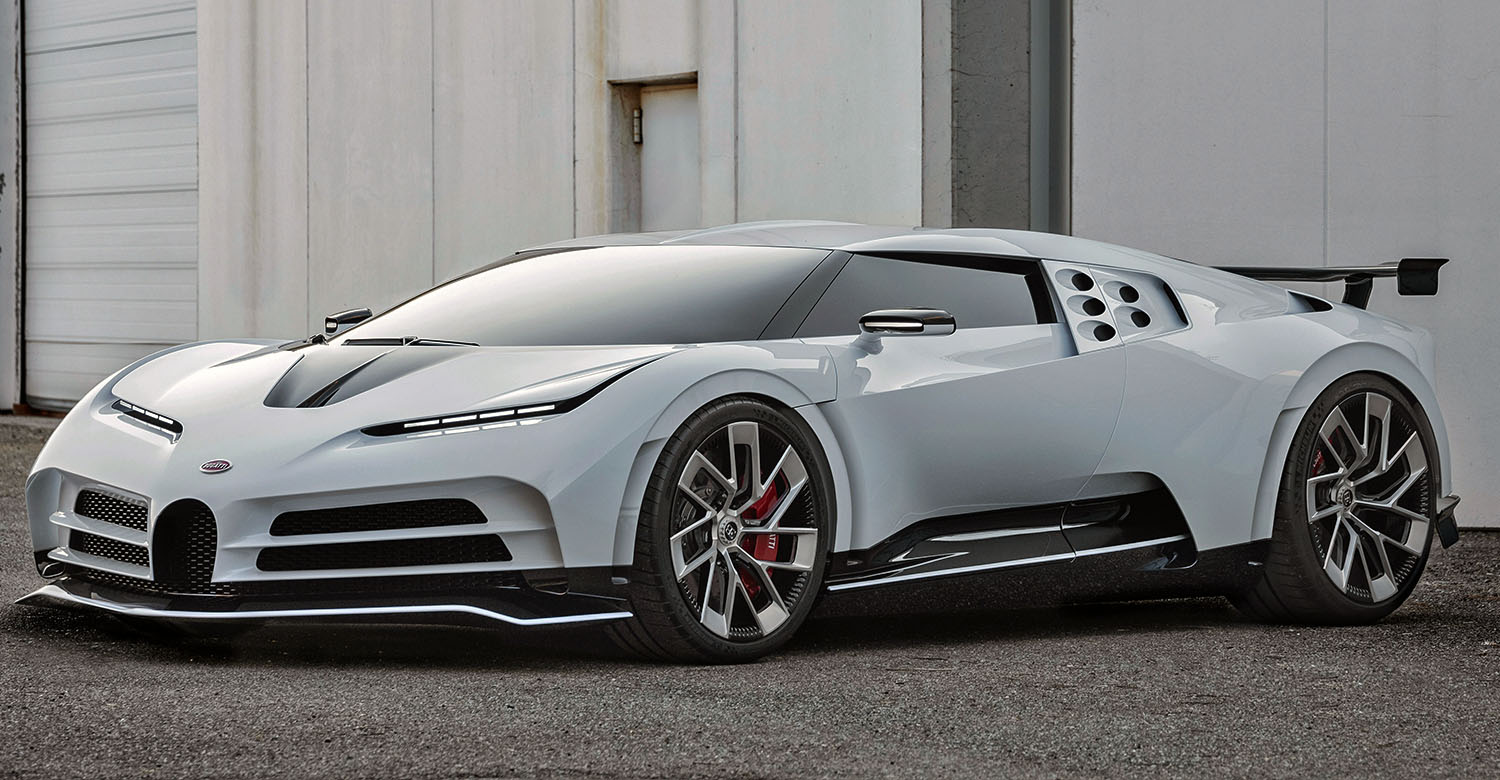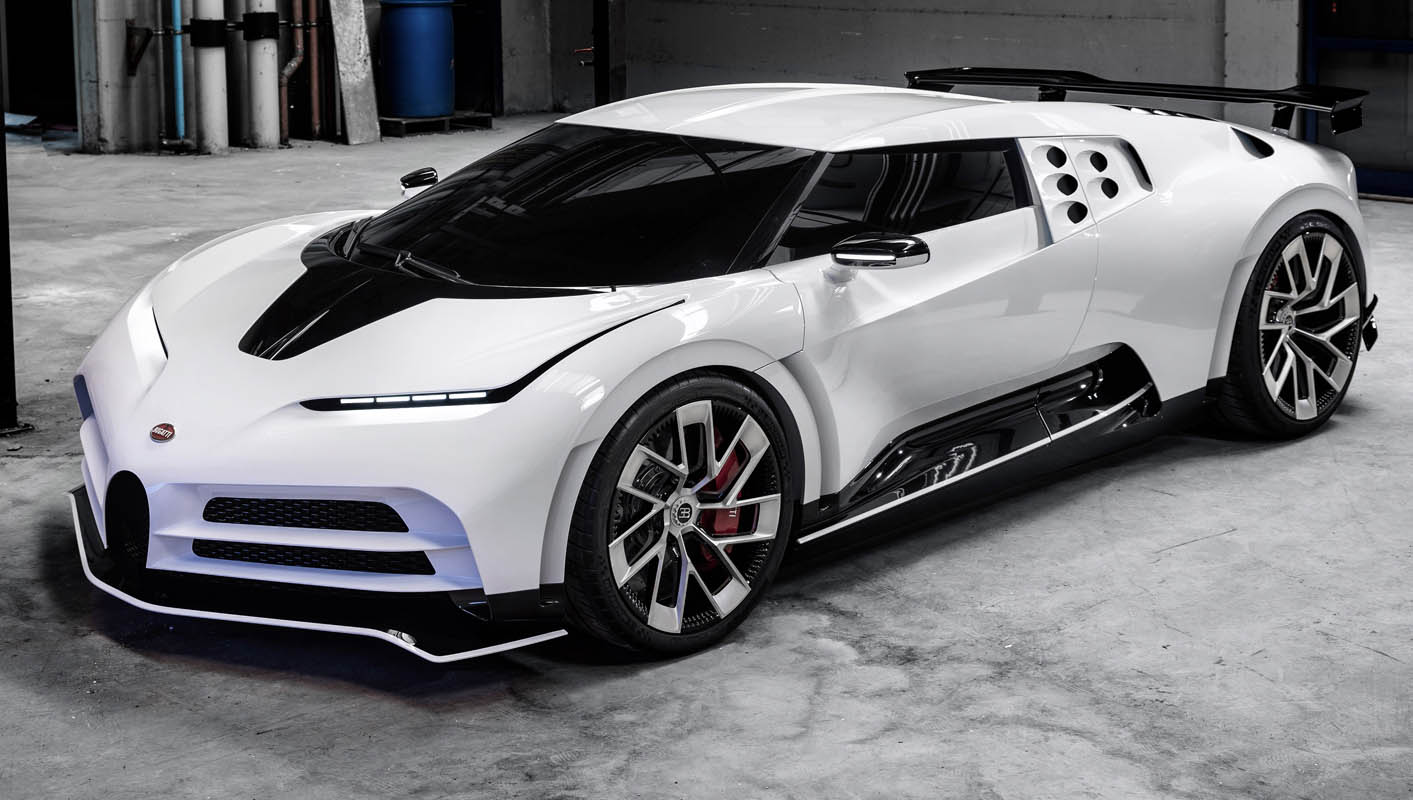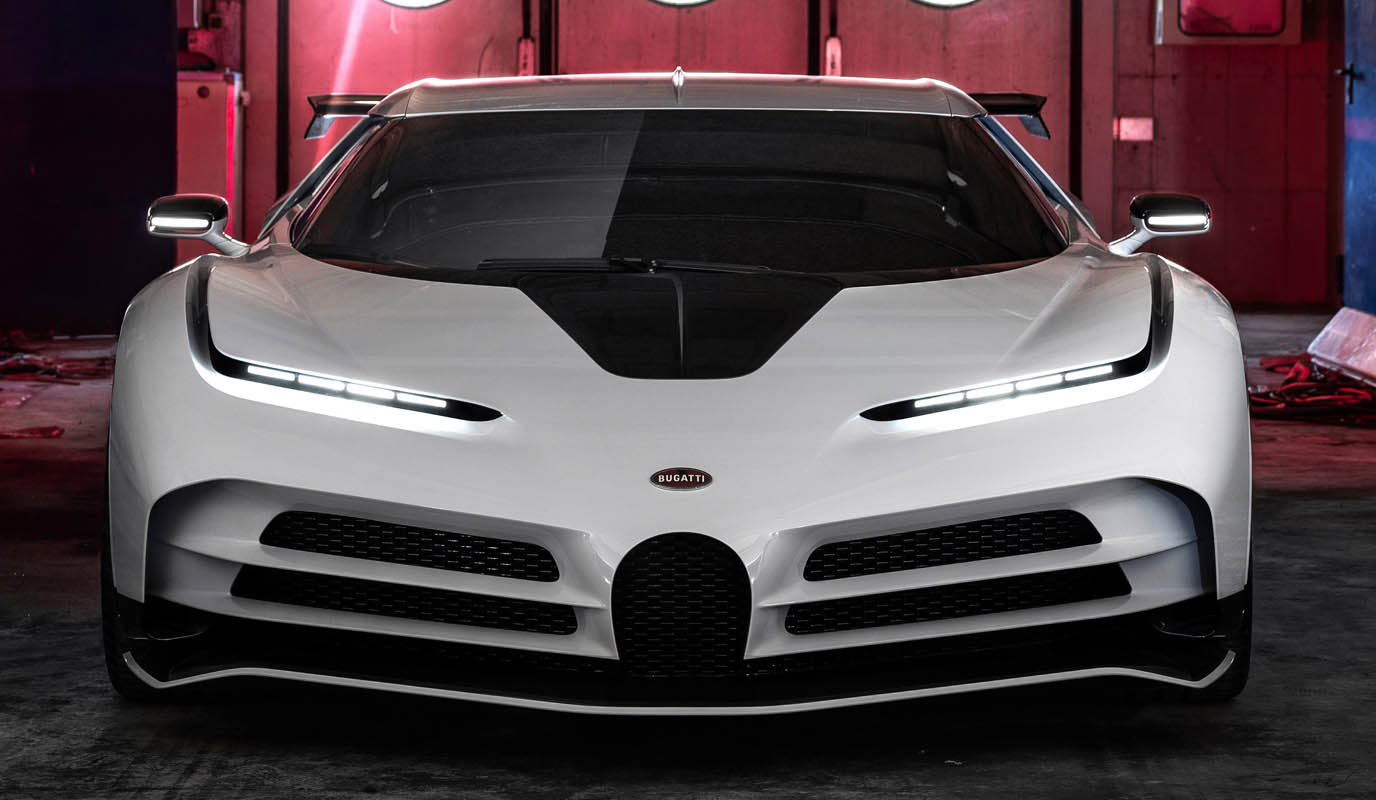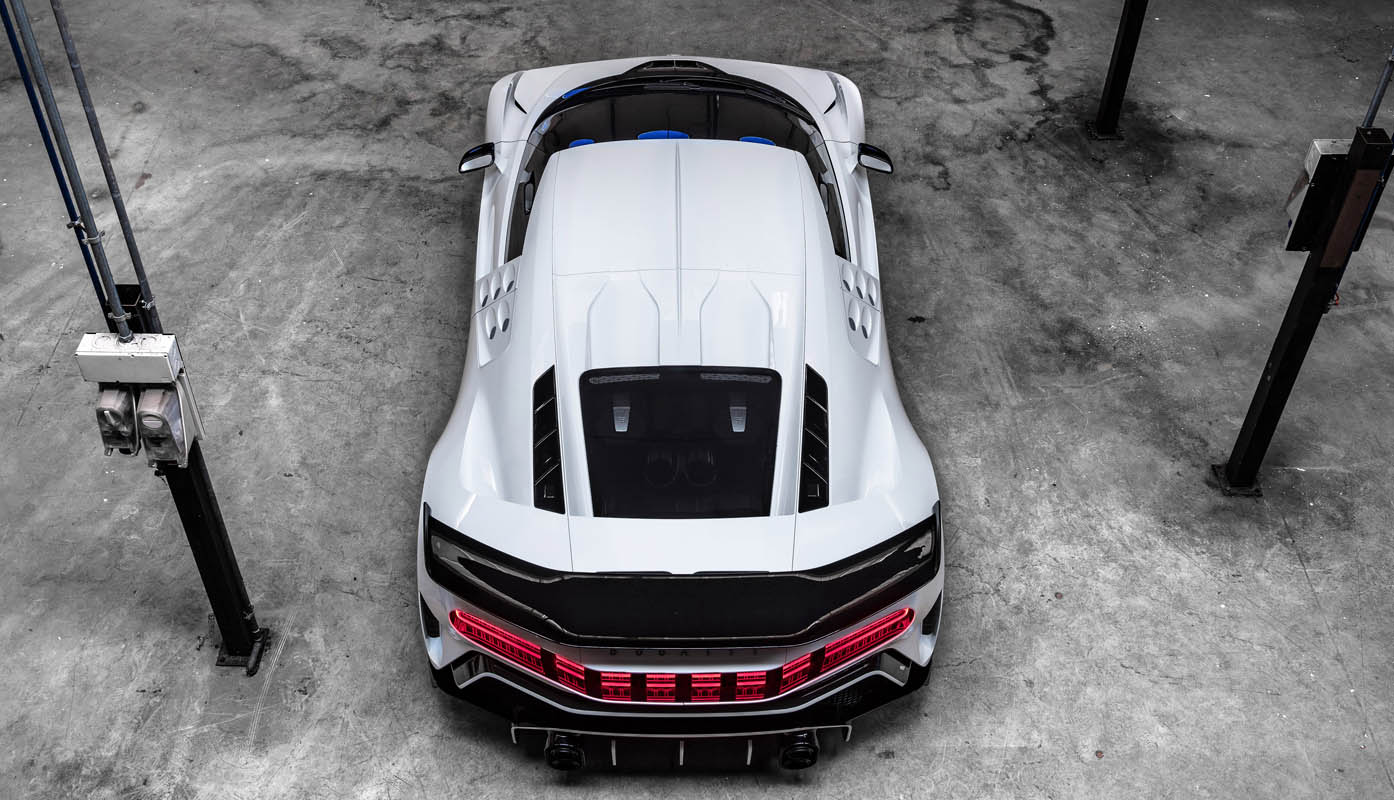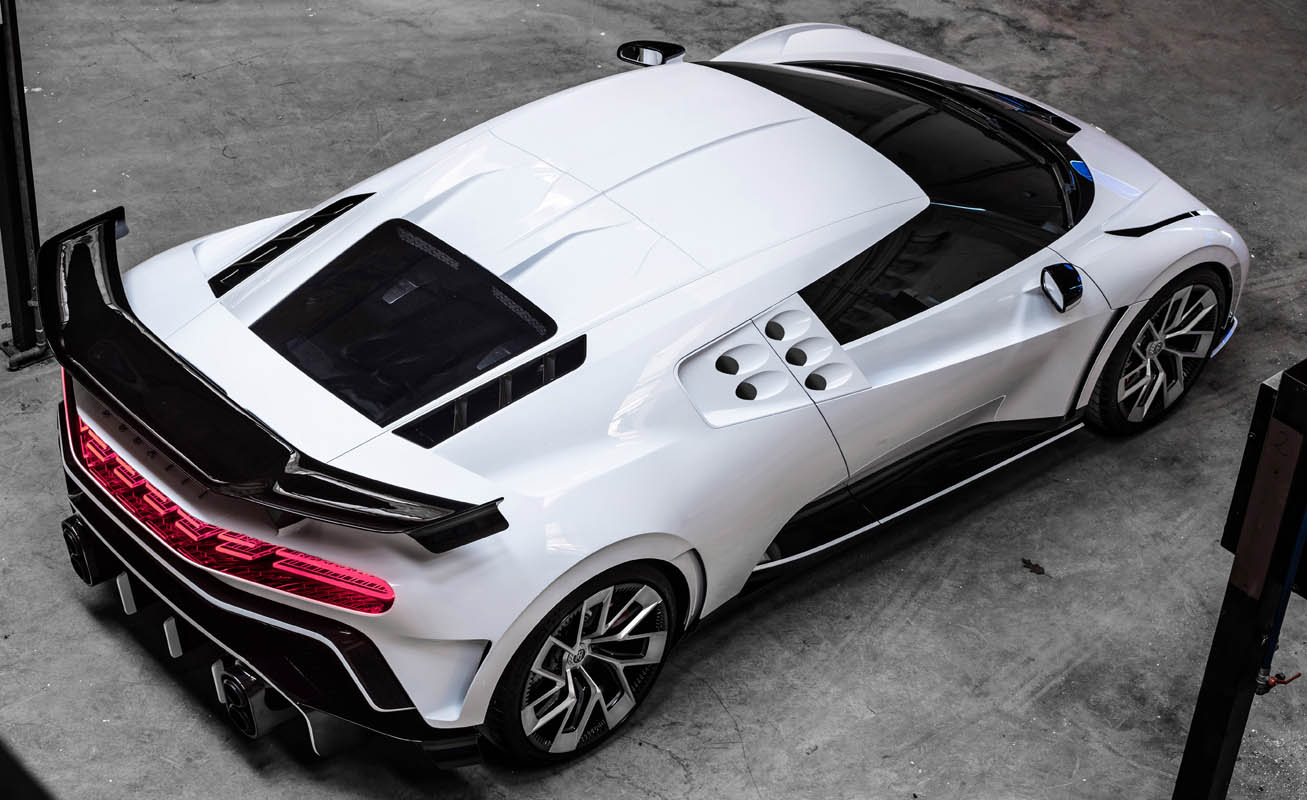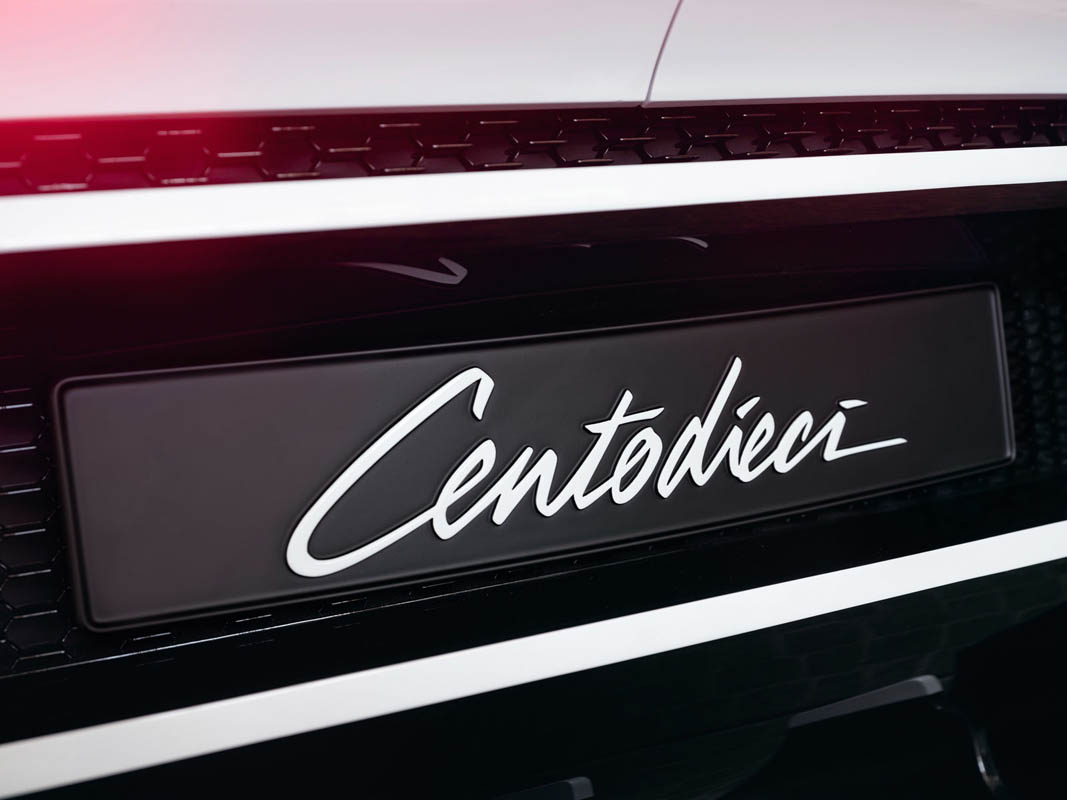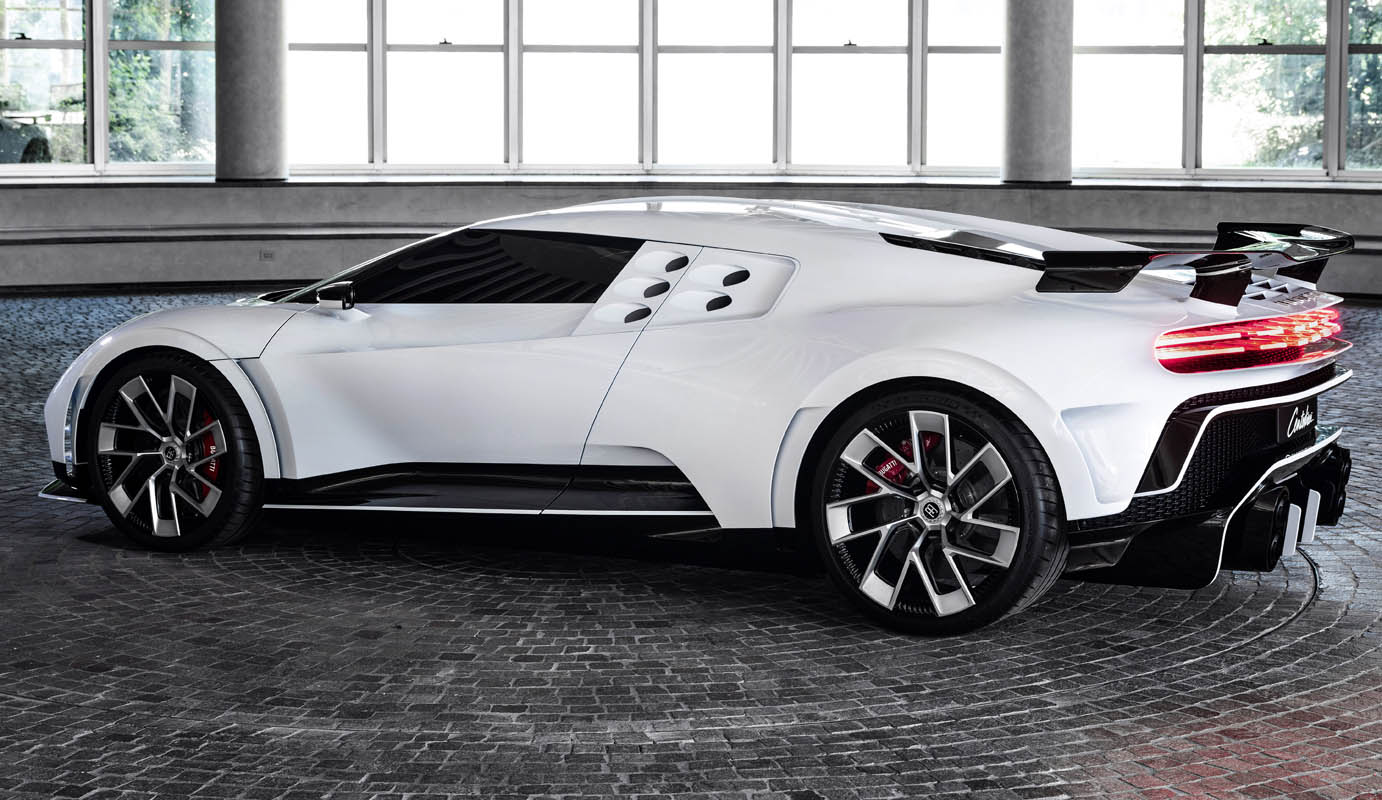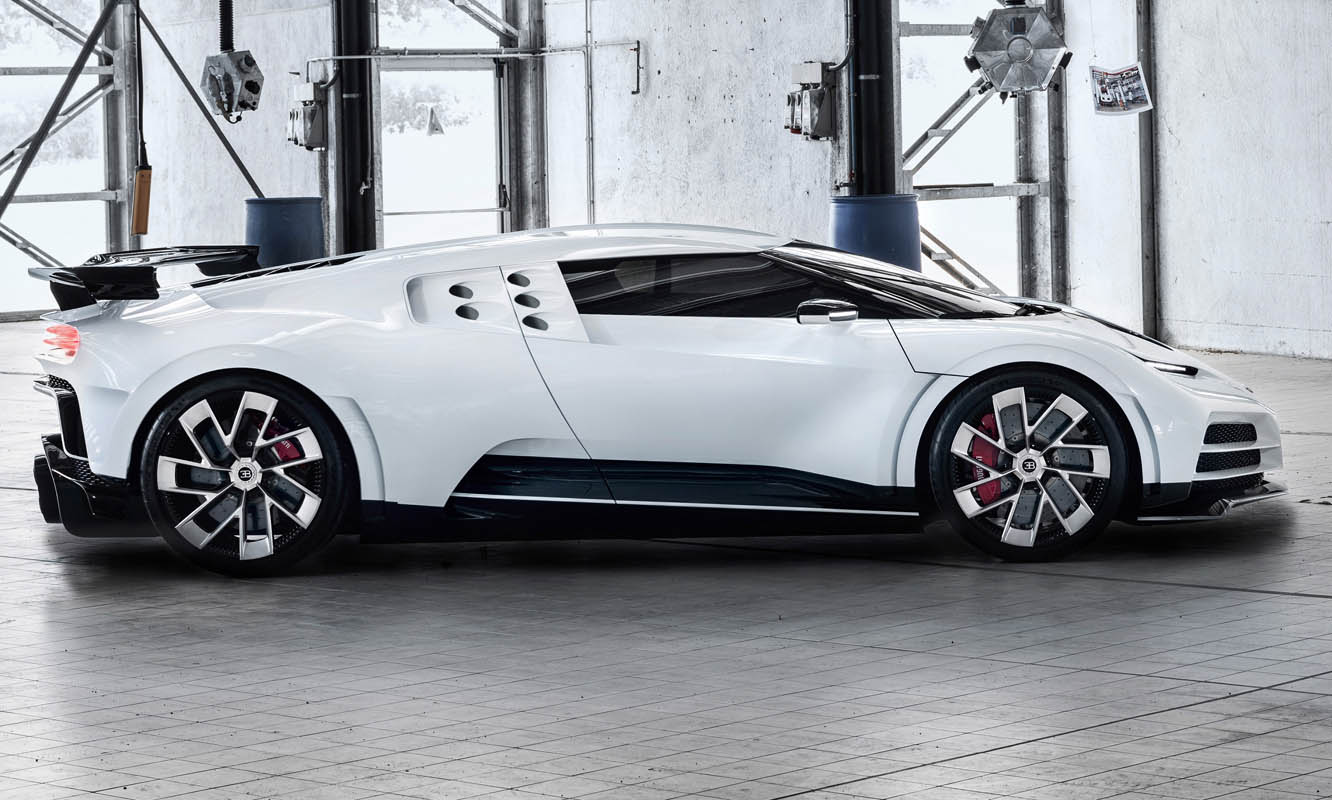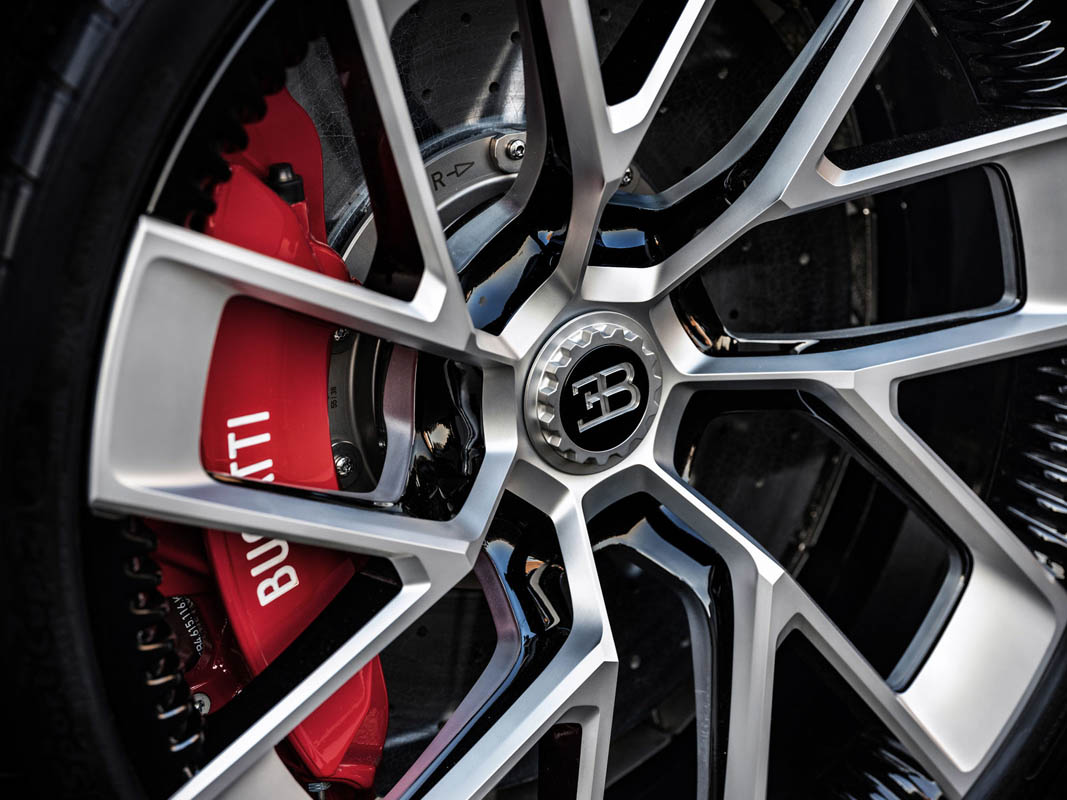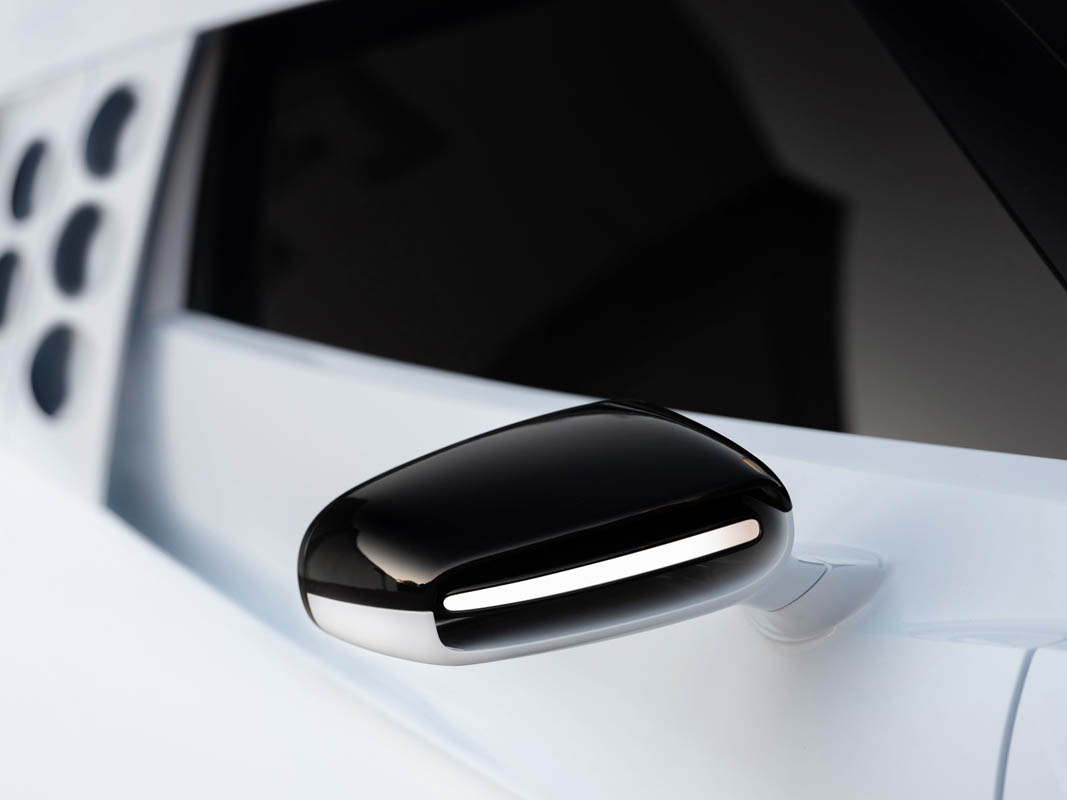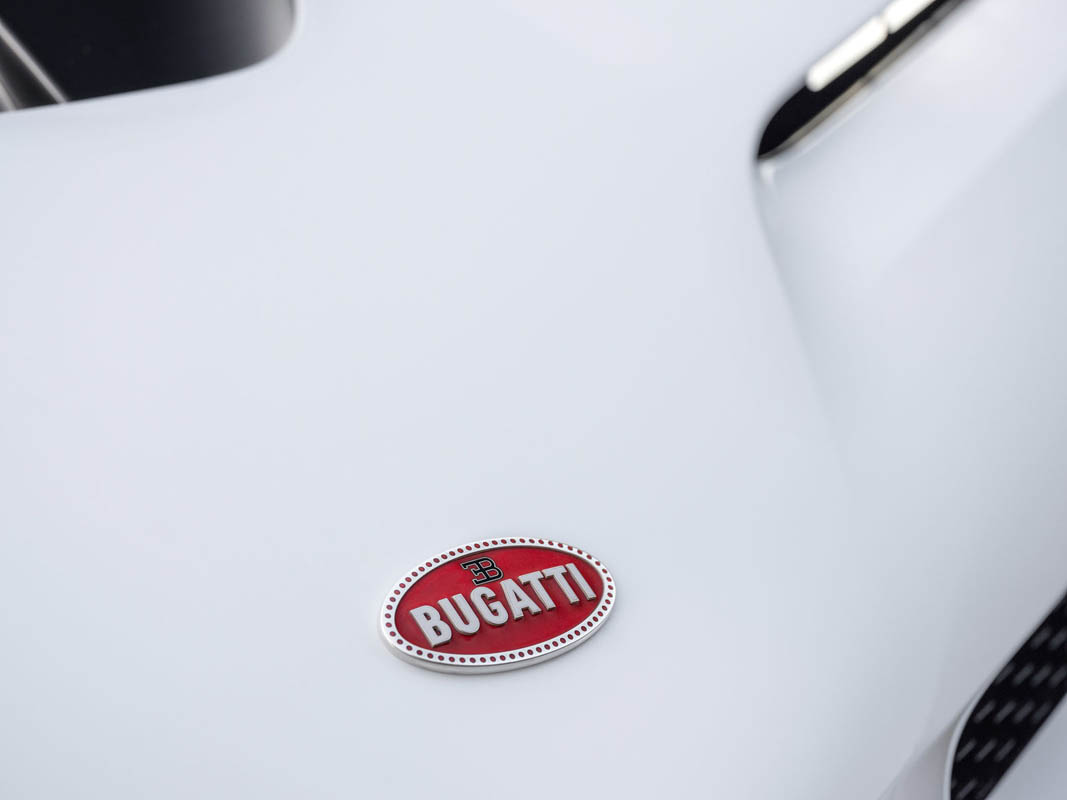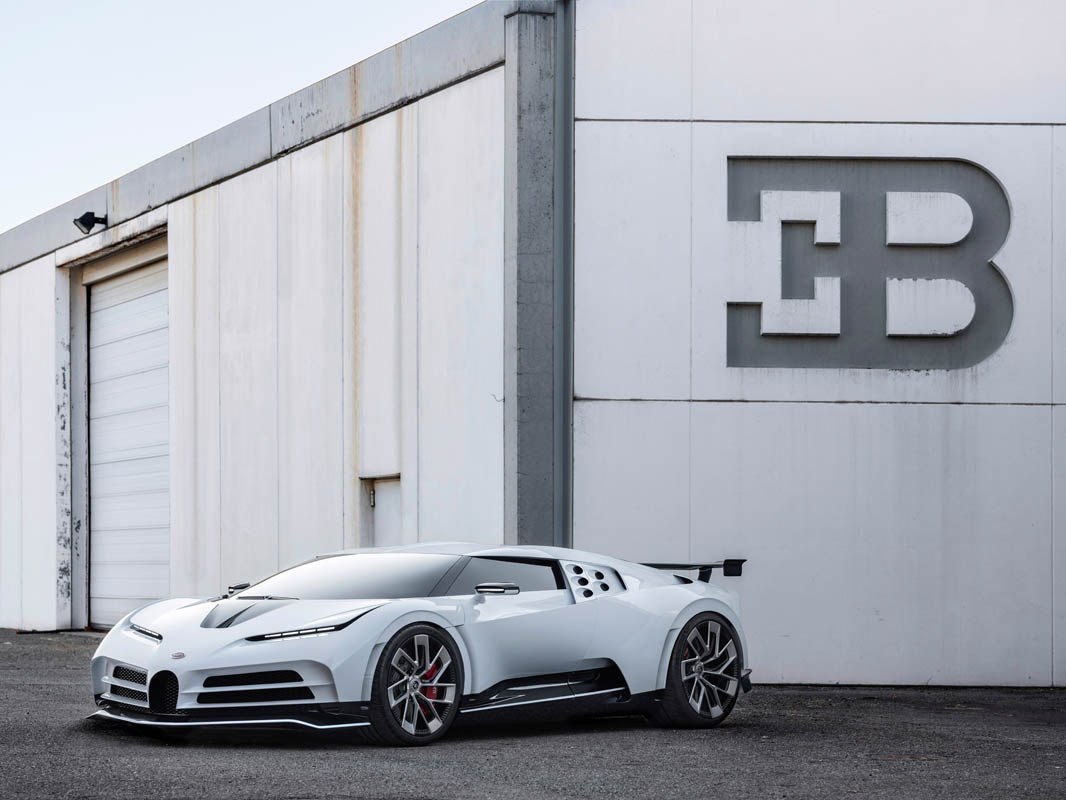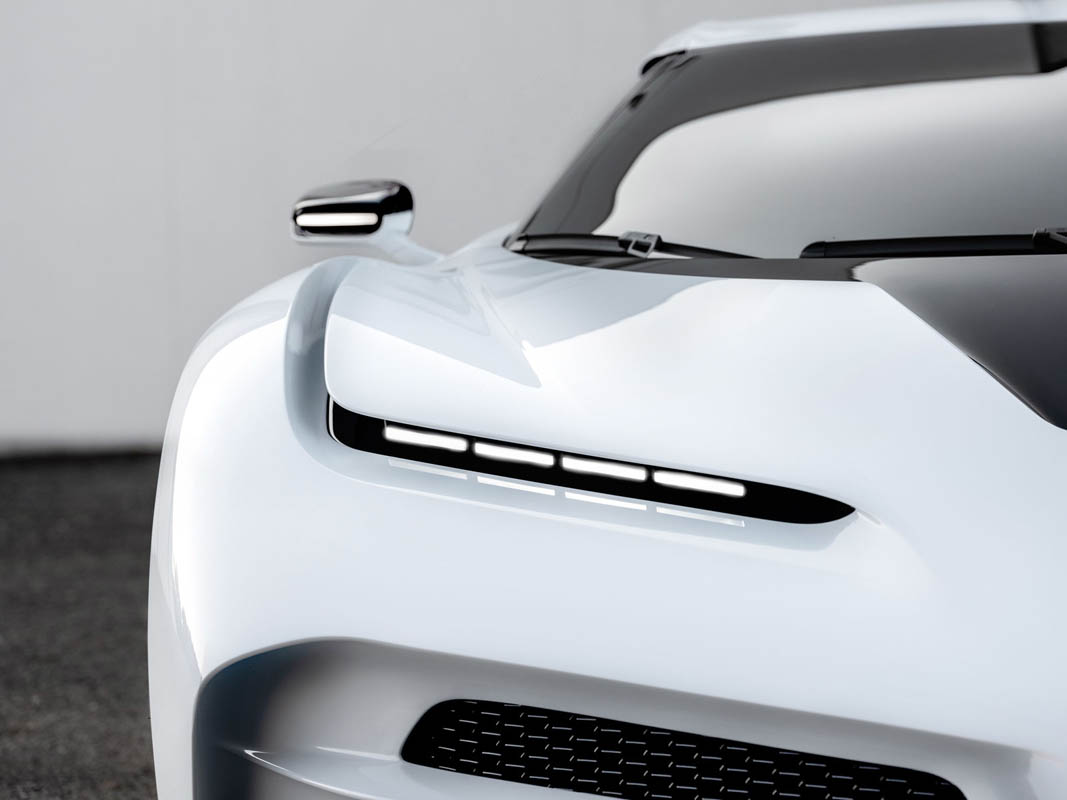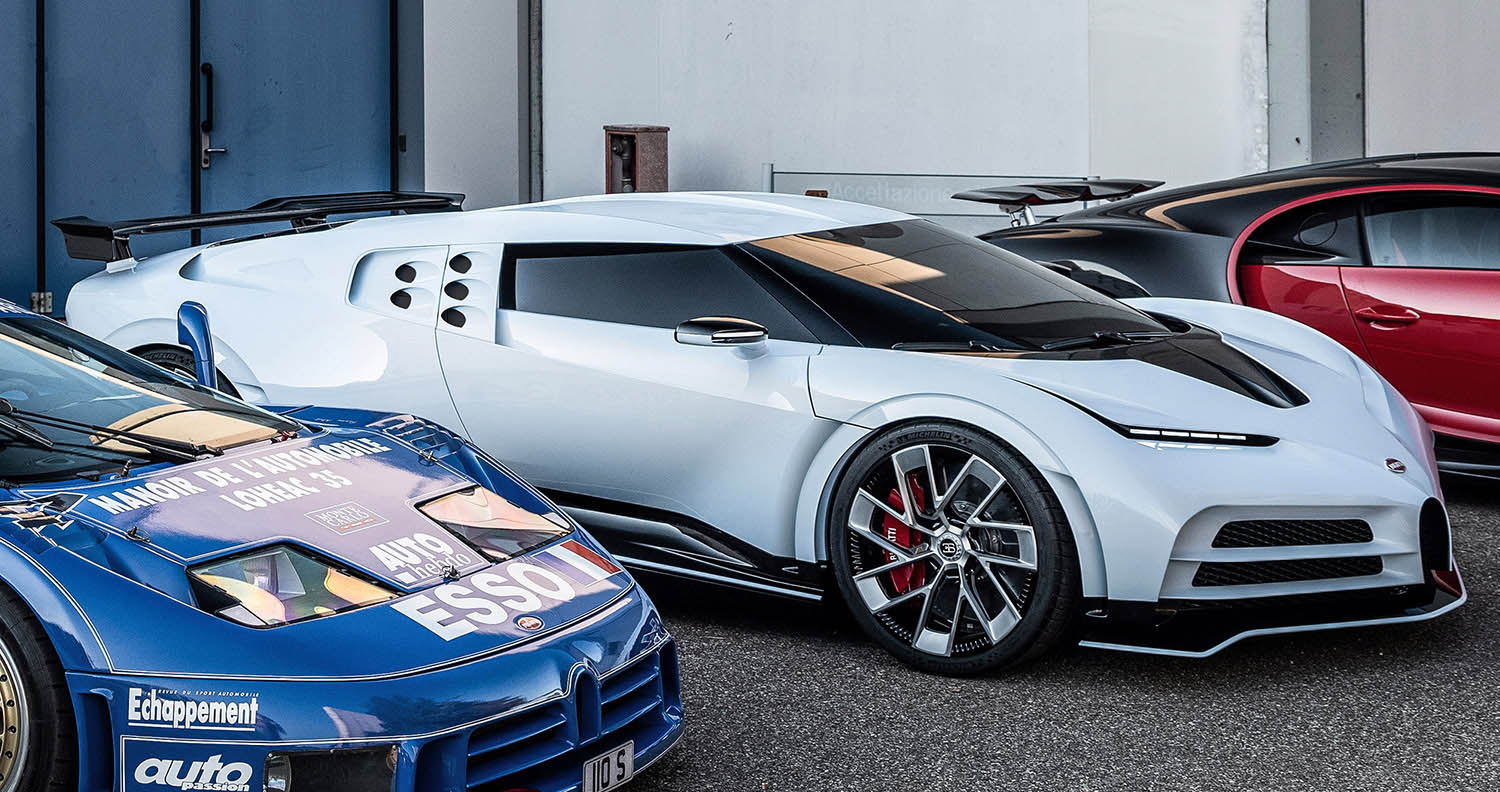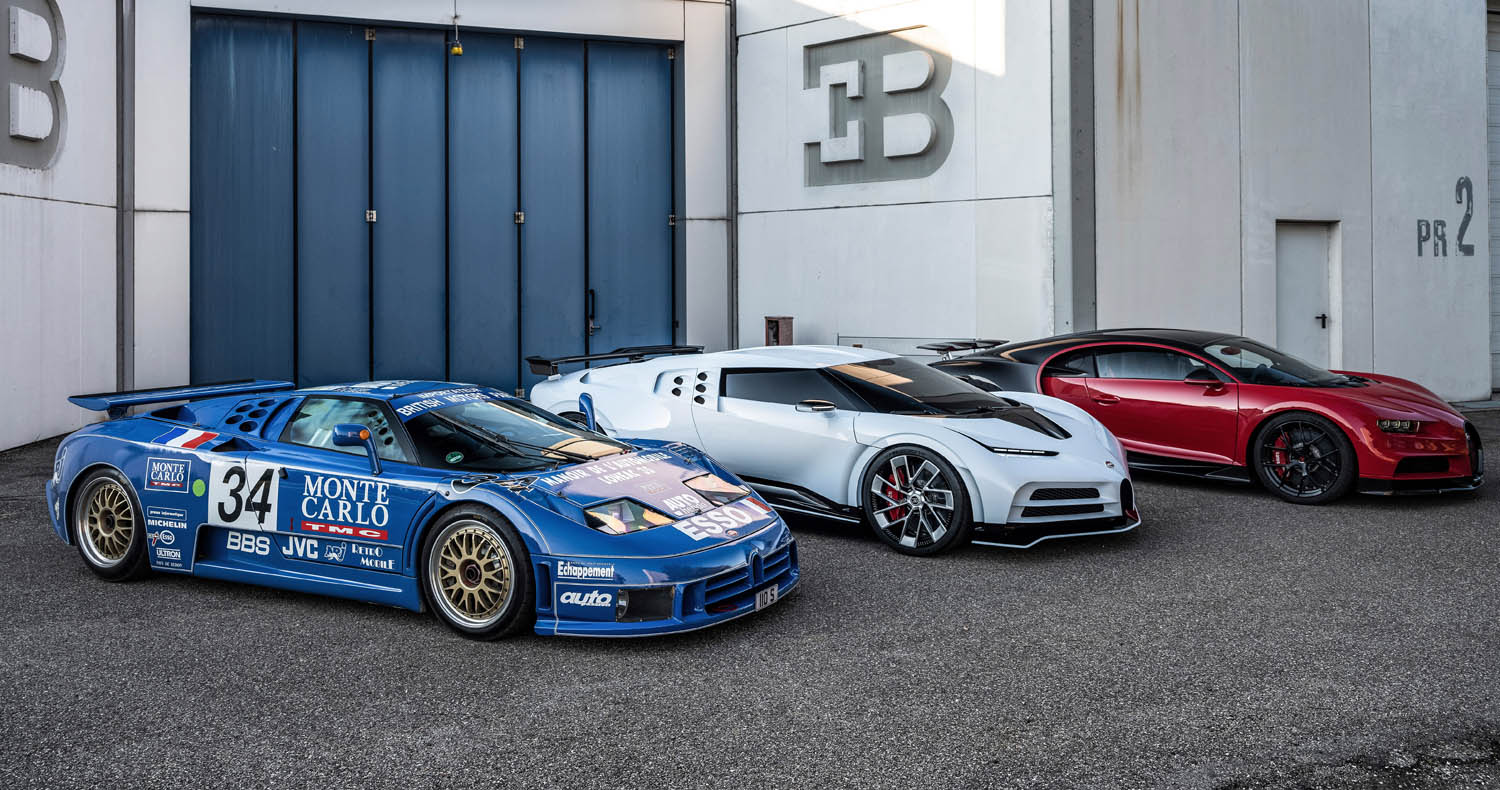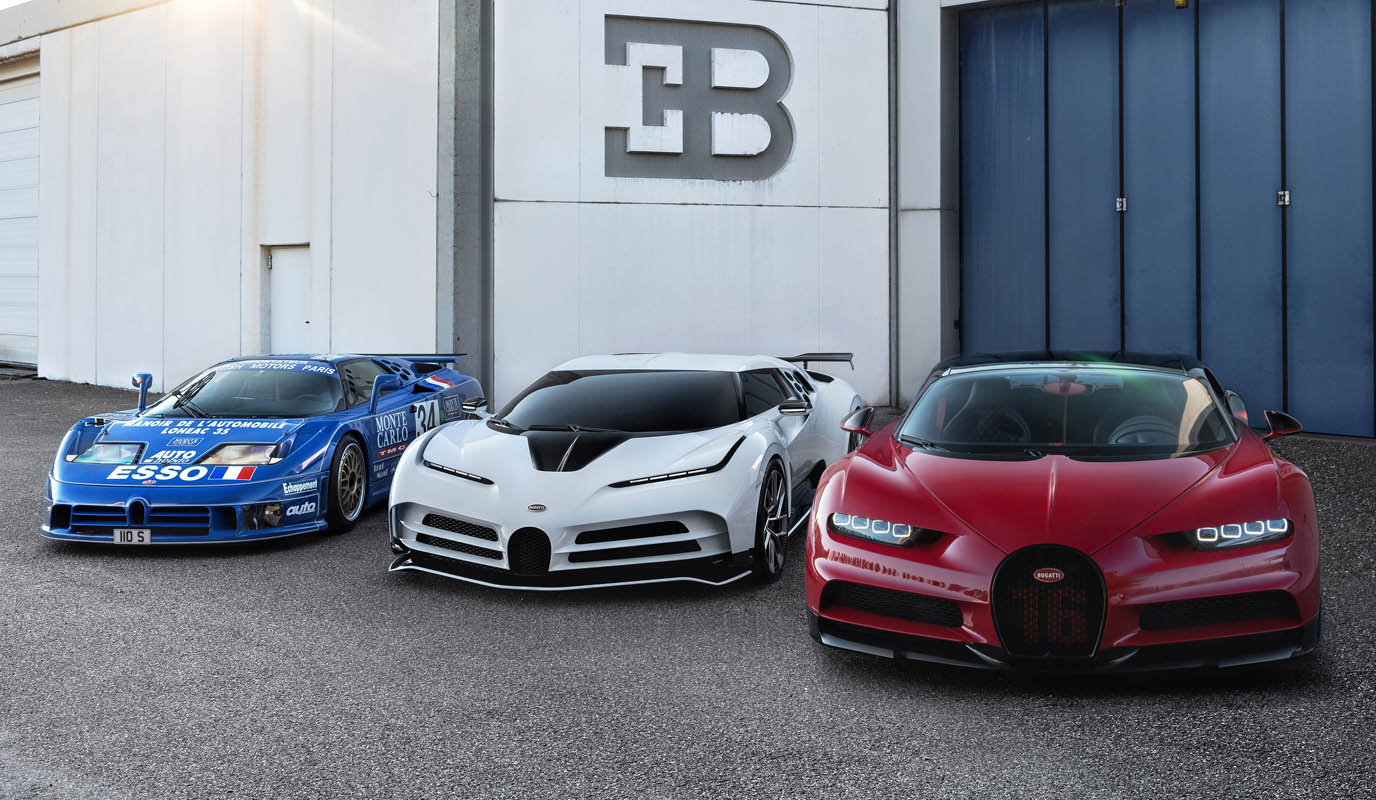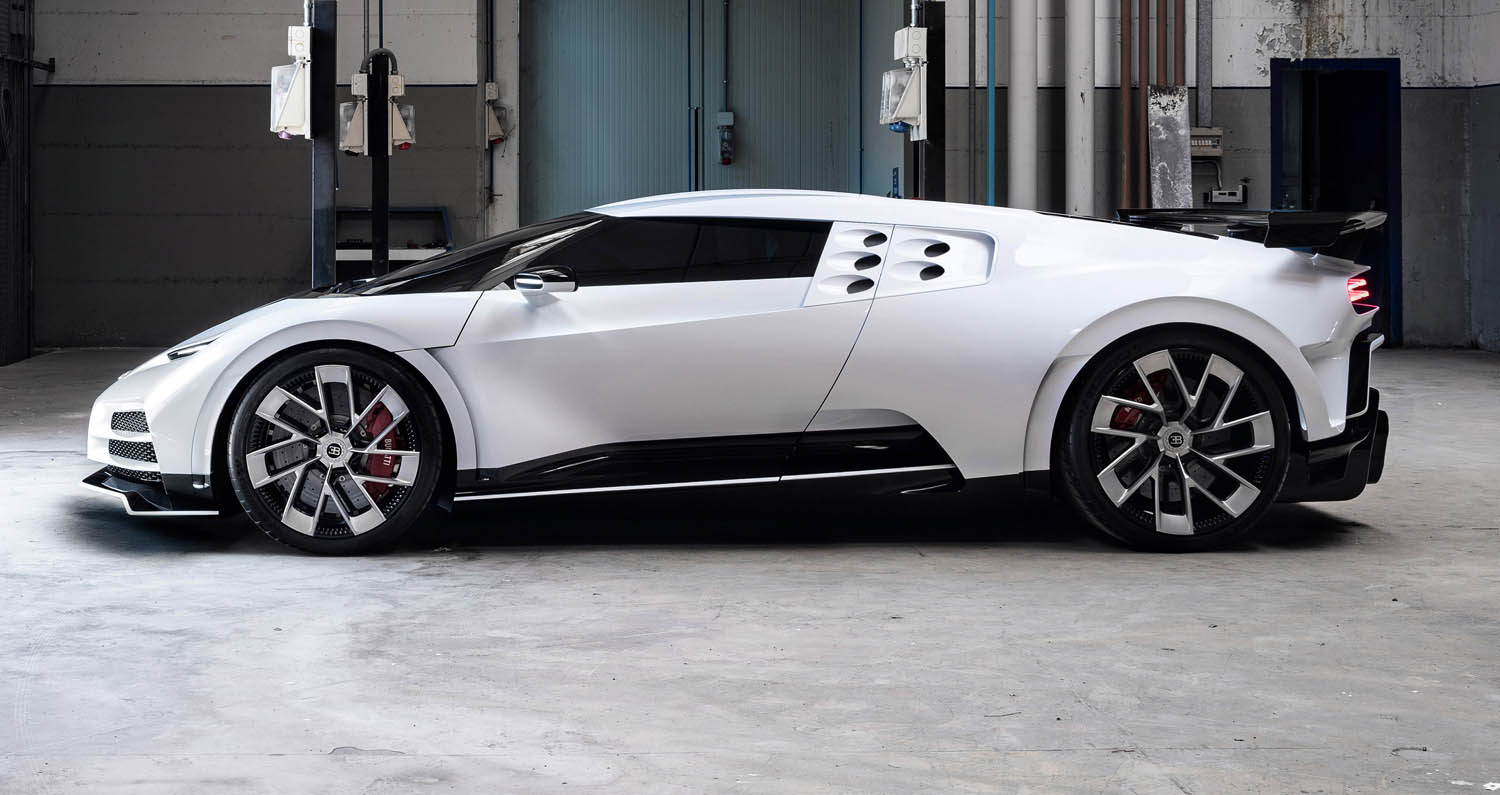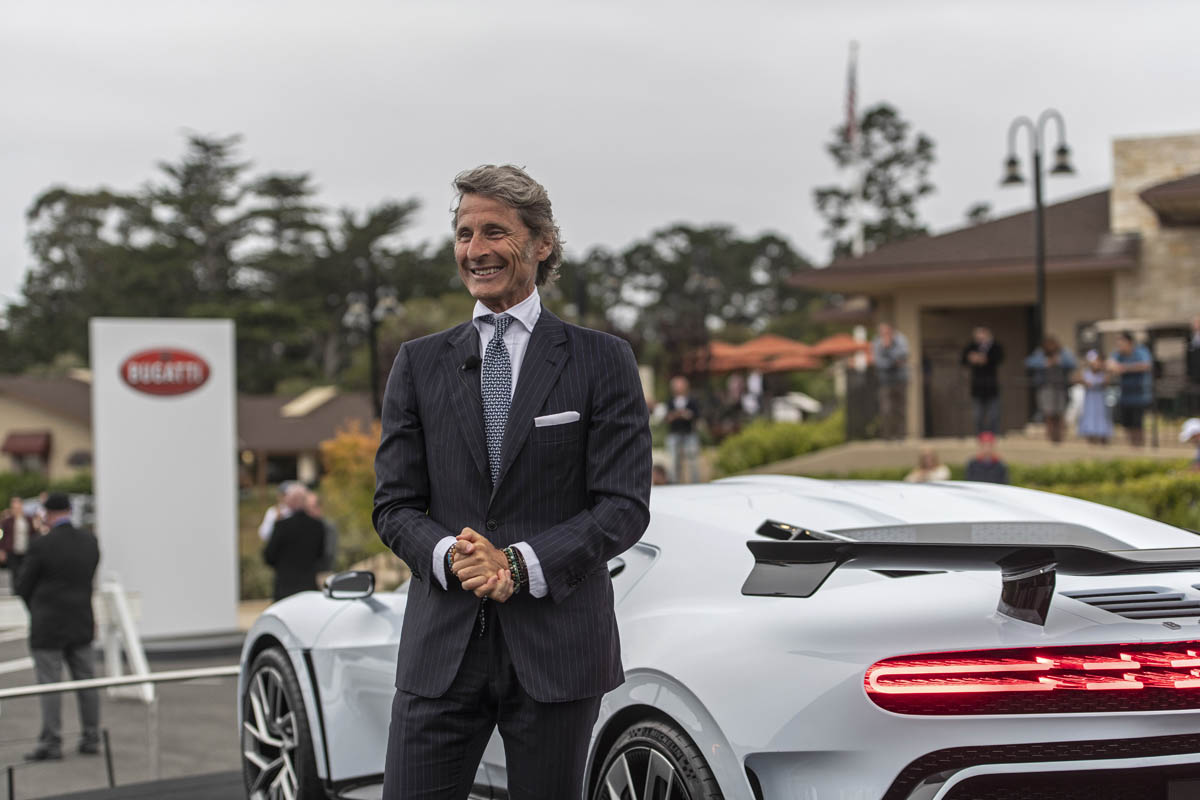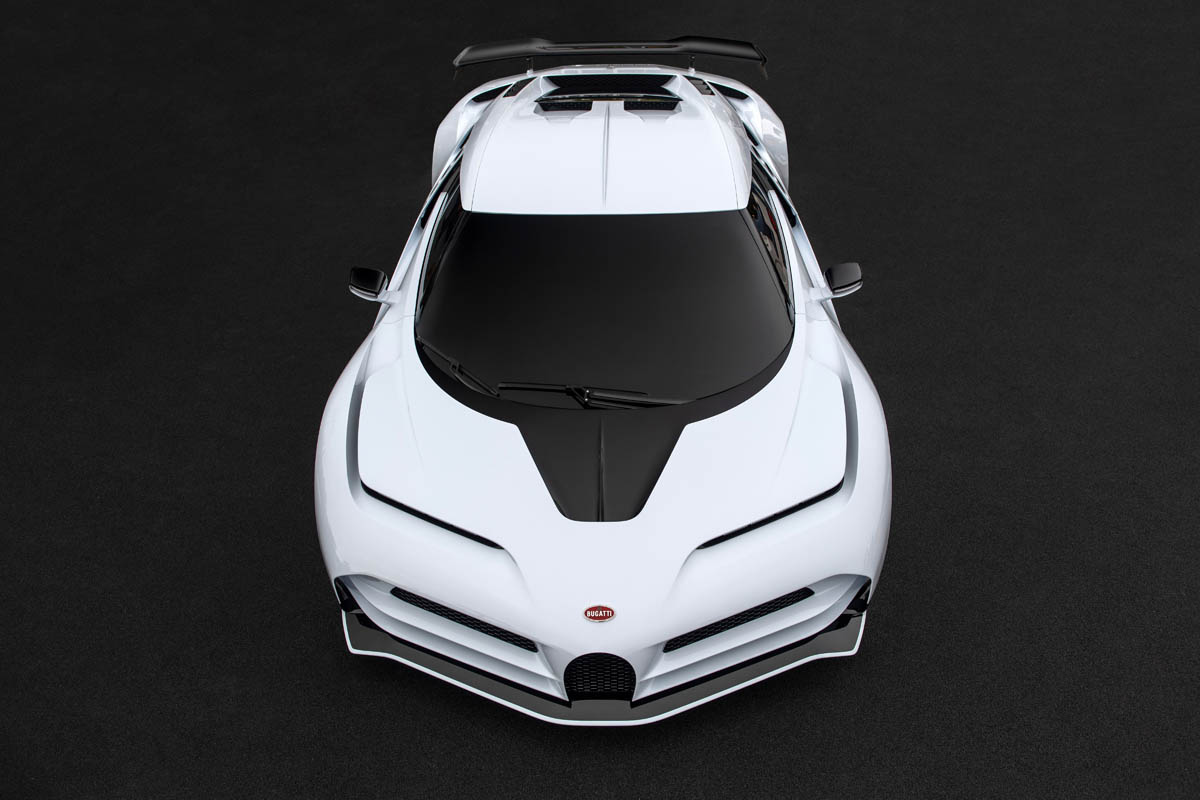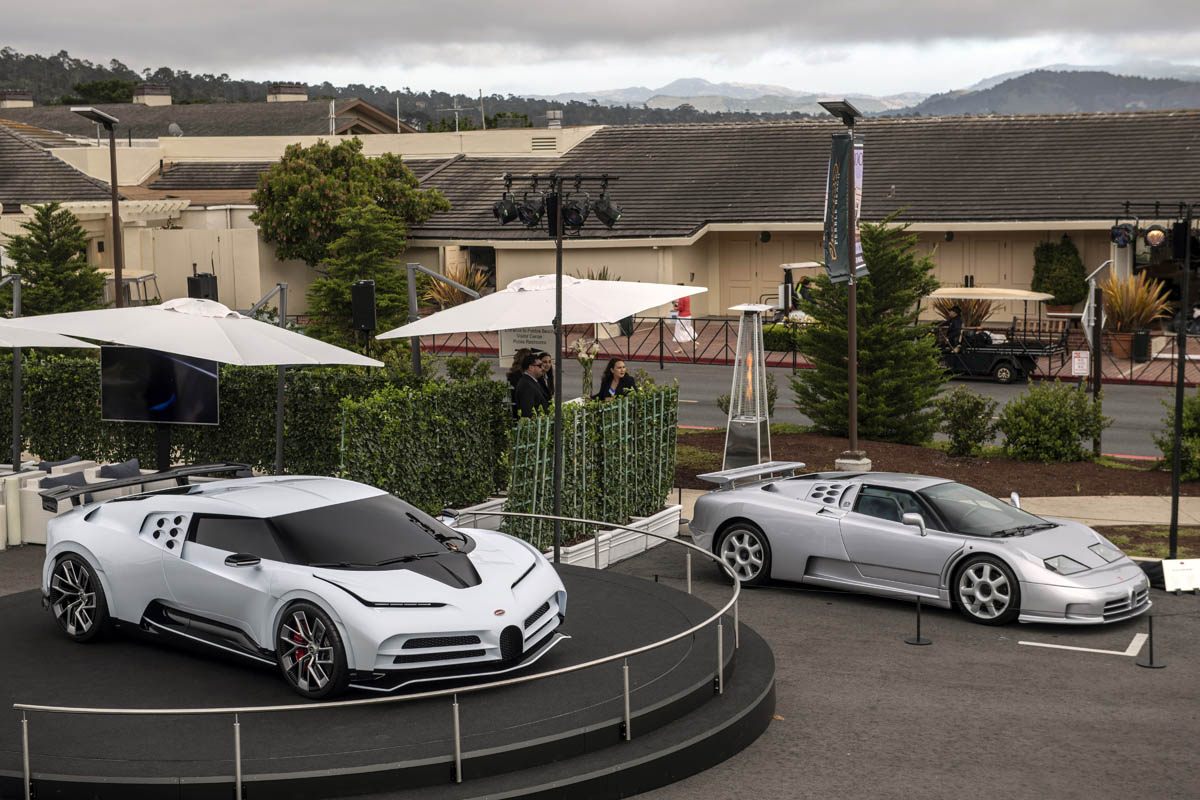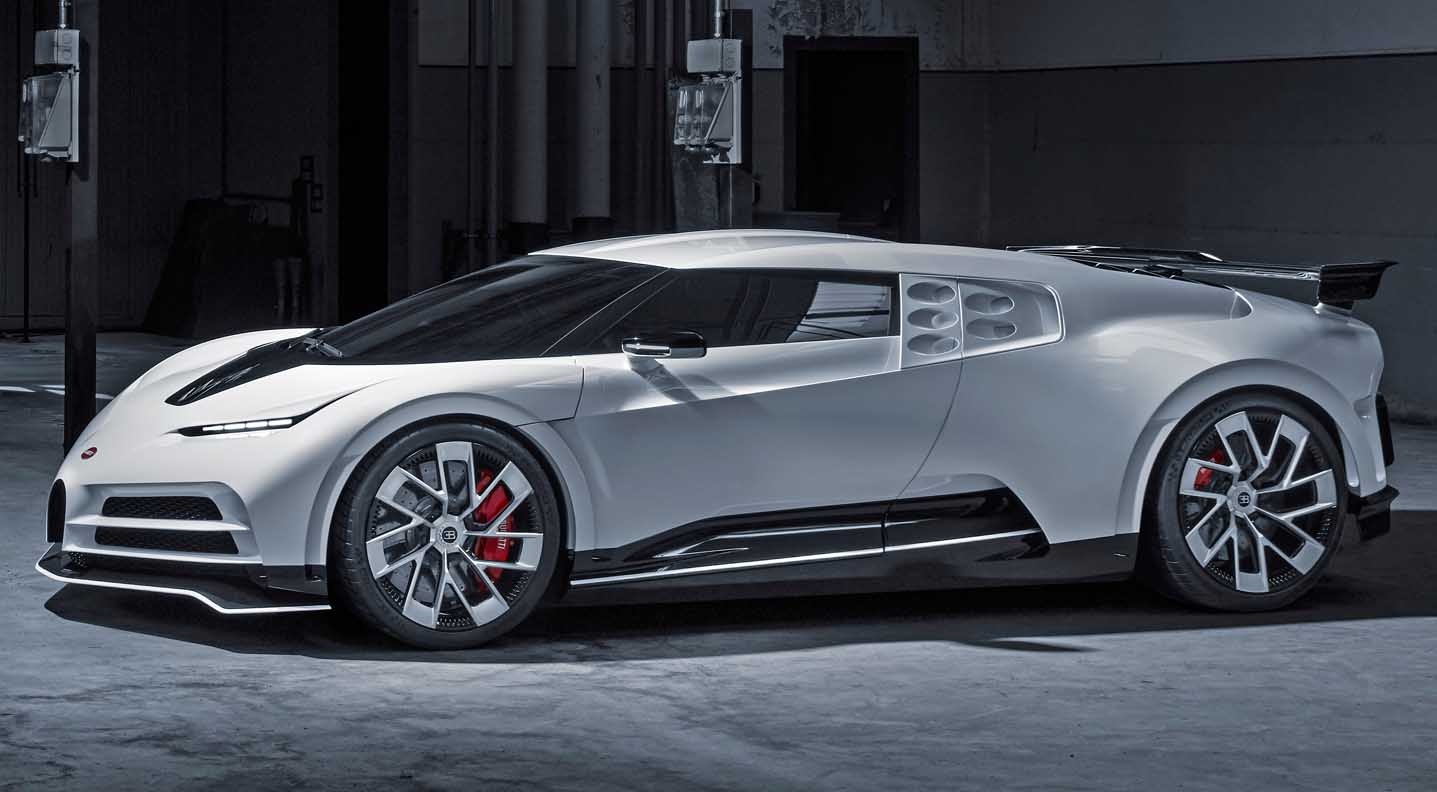
Exceptional design and vast power have been the hallmark features of Bugatti vehicles for around 110 years. The French manufacturer of hyper sports cars now consistently pursues this path further with the new special-edition Bugatti Centodieci. In addition, Bugatti is echoing its recent history with an exclusive and extraordinary small series.
“With the Centodieci, we pay homage to the EB110 super sports car which was built in the 1990s and is very much a part of our tradition-steeped history,” says Stephan Winkelmann, President of Bugatti. “With the EB110, Bugatti catapulted itself to the top of the automotive world once again after 1956 with a new model.” It was a crucial interim step for the production facility that was newly founded in Molsheim in 1998, taking Bugatti back to its roots in France, and the first hyper sports car of modern times – the Veyron.
“We are proud of our long Bugatti history, of which the EB110 is very much a part. That’s why we’re celebrating a reinterpretation of this extraordinary vehicle with the Centodieci – Italian for 110,” says Stephan Winkelmann. The EB110 was built in Campogalliano, Italy, but from the very outset it never denied its French influences. Former owner Romano Artioli opened the factory on Ettore Bugatti’s 109th birthday – 15 September 1990. Artioli made a deliberate choice in opting for Campogalliano, a small town in Emilia Romagna. The location had a key advantage in the 1990s: it was in the catchment area of several Italian sports car brands, so Artioli was easily able to recruit experienced employees for his project. Artioli presented the super sports car EB110 to the public on Ettore Bugatti’s 110th birthday – hence the type designation: EB for Ettore Bugatti, 110 for his 110th birthday.
New three-dimensional design
There are many areas in which the new special-edition Bugatti Centodieci echoes the former super sports car of the 1990s. “The challenge was not to allow oneself to be captivated too much by the design of the historic vehicle and work solely in retrospect, but instead to create a modern interpretation of the shape and technology of that time,” says Achim Anscheidt, Head Designer at Bugatti. Even sportier and more extreme than the Bugatti Chiron and Divo hyper sports cars, yet elegant and timeless like the La Voiture Noire, it is a one-of-a-kind Bugatti for the enthusiast.
“We faced a number of technical challenges in terms of the development and design of the Centodieci,” says Achim Anscheidt. The EB110 is a very flat, wedge-shaped and graphically quasi two-dimensional super sports car of the late 1980s. “Transporting this classic look into the new millennium without copying it was technically complex, to say the least. We had to create a new way of combining the complex aerothermal requirements of the underlying Chiron technology with a completely different aesthetic appearance.”
The flat, horseshoe-shaped radiator at the front reveals its depth only from the side view, with the newly developed, deep-seated front spoiler and the three-section air intakes providing a perfect match. The front of the Bugatti Centodieci drops very low. The iconic Bugatti horseshoe has been reduced accordingly, while the Bugatti logo Macaron sits on the hood, which is interrupted at the centre by a black element. “This allowed us to rekindle memories of EB110,” says Achim Anscheidt. The optimised front section with the extended front splitter and the airflow through the hood further improve the car’s aerodynamics.
The front is subordinated to the generally low geometry of the vehicle, despite its original, predominant cooling surface. The newly developed, complex and very narrow headlamps with integrated LED daytime running lights provide the perfect match. Thanks to the newly developed lighting elements, we were stylistically free in the front and rear sections to pay respectful homage to the EB110 while at the same time transposing this appealing visual reminiscence into modern technology,” says Achim Anscheidt.
“We incorporated the wedge-shaped design in the development process but we took it in a new direction,” says the designer. Instead of copying the classic Italian wedge in which the muscle runs from the rear to the front wheel, suggesting a dynamic leap forward, Bugatti strikes out on a new path in the Centodieci. The otherwise dominant Bugatti line, the C line on the B pillar, gives way to a new design Significantly smaller than the Chiron, five round air inserts – positioned in the form of a diamond – ensure sufficient air intake for the iconic 16-cylinder engine. In this way, Bugatti has brought forward the visually leaping wedge of the EB110 SS into a new millennium.
Instead of the graphic two-dimensional rear of the EB110 with its two pill-shaped tail lights, the Bugatti Centodieci relies on a wide air outlet opening for more efficient engine thermals, bringing to life the flying tail light elements in graphic kinship with the EB110. It took several months to develop solutions to ensure a balanced temperature. As in the EB110, the engine is seen behind a transparent glass surface. The rear is formed into a single ventilation hole, characterised by the eight rear light elements, 2+2 exhaust tailpipes positioned on top of each other in a black matt anodised finish and a performance diffuser to improve downforce. The overhanging rear wing is permanently attached in the style of the original EB110 SS. This increases the downforce. Downforce is supported by the aerodynamic tailgate and a laminar flow-optimised rear window.
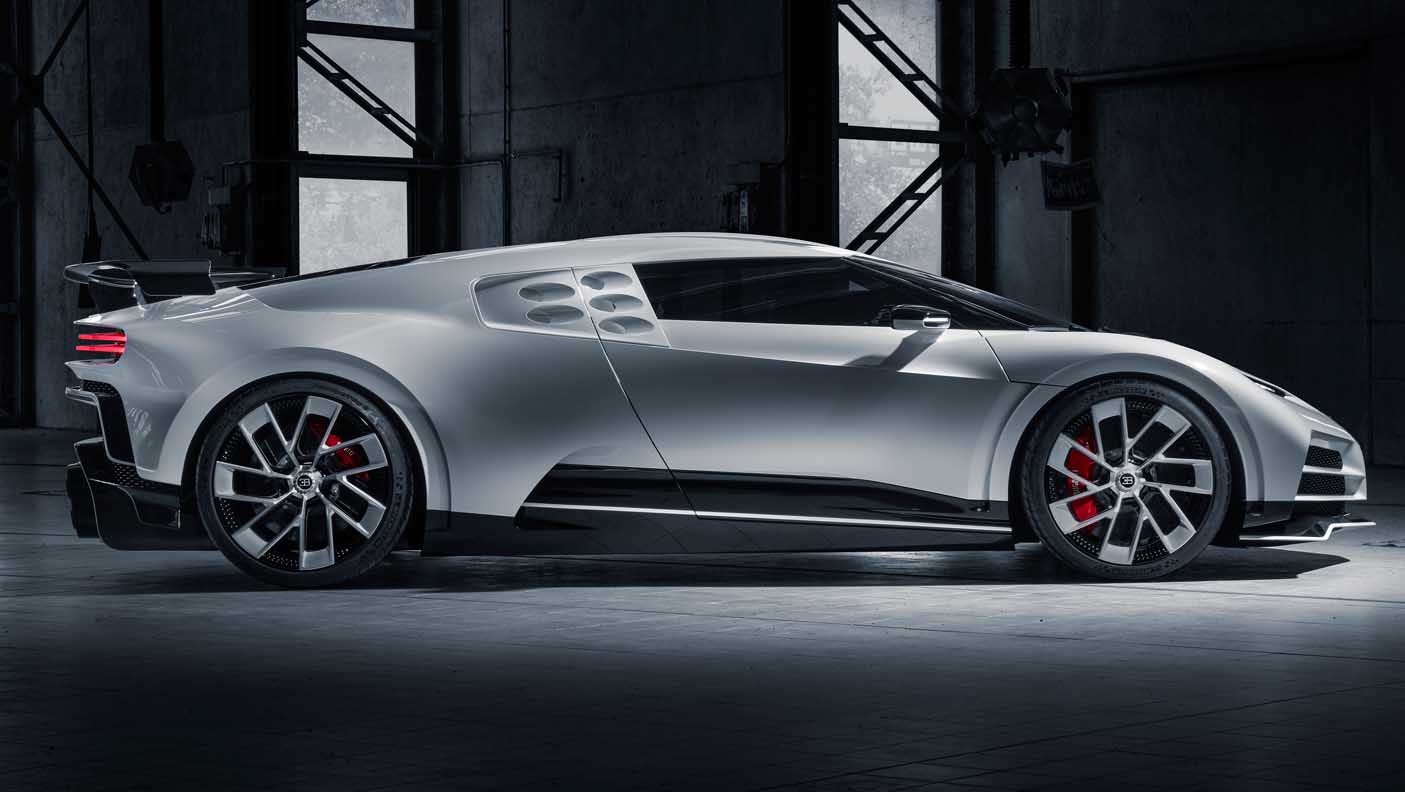
16-cylinder engine now delivers 1,600 hp
Instead of the V12, the Bugatti Centodieci features the iconic 8.0-litre W16 engine with 1,176 kW/1,600 hp at 7,000 rpm. An additional air inlet in the area of the oil cooler reliably regulates the temperature of the performance-enhanced engine. The Centodieci sprints from 0 to 100 km/h in 2.4 seconds, to 200 km/h in 6.1 seconds and to 300 km/h in 13.1 seconds; the top speed is electronically cut off at 380 km/h. “It’s not just the top speed that makes a hyper sports car. With the Centodieci, we once again demonstrate that design, quality and performance are just as important,” says Stephan Winkelmann. Compared to the Chiron, the Centodieci saves 20 kilograms of unladen weight. Among other things, a lightweight windscreen wiper and stabilisers made of carbon are used. This enables a sensational power-to-weight ratio of just 1.13 kilograms per horsepower. “The increased power and lower weight further improve performance – for even better acceleration at high speeds. The Centodieci offers our customers an improved power-to-weight ratio and even more dynamic handling,” says Stephan Winkelmann.
The new paint tone matches this. “With the communication paint finish in white, we’re demonstrating a powerful contrast with the La Voiture Noire – the black car just presented in March: two completely opposing yet related forces, like yin and yang,” says Stephan Winkelmann. He says that this was what continues to set Bugatti apart after 110 years.
Naturally, customers can have their special-edition Bugatti Centodieci painted in the Bugatti colour of their choice. The small series, limited to ten vehicles (and already sold out) and handcrafted in Molsheim, France, will be delivered in two years at unit prices starting at EUR 8 million plus VAT. After its short period in Italy, Bugatti has now been back at its old headquarters in Molsheim, France, for almost 20 years. This is where Ettore Bugatti produced the very first vehicles that bore his name at the end of 1909.
First prototype for series development
The Centodieci1 evokes automotive history: the unique project is a tribute to the legendary EB 110. This few-off project comprises production of just ten vehicles for an exclusive clientele. The next phase is about to start for the hyper sports car with a W16 engine and 1,600 PS: the first prototype for series development is currently being assembled.
The design of the Centodieci with its flat front, low-slung front spoiler and three-part air intakes reinterpret the shape of the most famous super sports car of the 1990s. The EB 110 was a key milestone on the road to the revival of the Bugatti brand in 1998 at Bugatti’s historic headquarters in Molsheim, ultimately resulting in the first hyper sports car of the modern era – the Veyron.
The Centodieci is Bugatti’s way of paying its respects to the Italian entrepreneur Romano Artioli and architect Giampaolo Benedini, the men who created the EB 110 some 30 years ago. “The challenge for us was not to get caught up in the design of the legendary EB 110 itself and avoid focusing solely on a retrospective approach. Our aim was to create a modern interpretation of the shape and technology of that time: but at the same time, we didn’t want to lose the charm and character of the EB 110. After all, the super sports car is still fascinating today with its distinctive design and technology,” says Achim Anscheidt, Design Director at Bugatti. The biggest challenge: to transform the very flat, wedge-shaped and graphically virtually two-dimensional body of the EB 110 into a modern, three-dimensional sculpture to project the fascination of the super sports cars of that time into the modern age.
Since the world premiere of the Centodieci, the Bugatti development team has been working on the technical implementation of the strictly limited model. “Every newly developed vehicle poses an immense challenge, as we are creating a very small series that at the same time has to meet and even exceed all the quality and safety standards of a large series,” says André Kullig, technical project manager for one-off and few-off projects at Bugatti. The engineers first delve into calculations for the body, aerodynamics, engine and transmission. They simulate the airflow on the vehicle and check all components down to the smallest screw.
Meanwhile, the design team checks the styling in close collaboration with the developers before finalising this and designing the surfaces. They adjust the curvature of the components according to the incidence of light so that the appearance is homogeneous in all lighting conditions – an elaborate development process. After well over a year of design and simulation, the team has now developed the first prototype.
“I was hugely looking forward to the first prototype of the Centodieci,” says Kullig, who has been with Bugatti since 2004 and was previously involved in projects such as the Divo2 and La Voiture Noire1. “Series development of a few-off project is an especially exciting challenge – and that is also true in the case of the Centodieci, which is a very design-driven project,” says Andre Kullig. His task is to ensure a perfect match between the exterior shape and the technology. Despite only producing ten vehicles, the Centodieci must meet all the same technical requirements as a Chiron2.
“With the newly designed body, there are changes in many areas that we had to simulate using special computer programmes. Based on the data, we were able to establish a basic set-up as a starting point for series development and the first prototype,” explains André Kullig.
The team was recently able to successfully put the rolling chassis into operation on the site’s own roller dynamometer in the Molsheim Atelier and check all the drivetrain functions –to ensure the Centodieci can move onto the next stage of development. The next step is now to build the elaborate exterior. “With a high-performance hyper sports car like the Centodieci, it’s a matter of filtering out subtleties based on the modified requirements of a completely new exterior – something that requires highly focused and intense development work,” says André Kullig.
The technical challenges involved were enormous: an engine with eight litres of displacement and 1,600 PS generates high temperatures that require sophisticated thermal management. As in the EB 110, the engine is seen behind a transparent glass surface. So to ensure more efficient engine thermodynamics, the Centodieci has a wide air outlet opening and modified air flows. In addition, guide flaps around the five circular air inserts – positioned in the form of a rhombus – ensure sufficient air intake for the 16-cylinder power unit. As a result, the otherwise dominant Bugatti line, the C-line, gives way to a new design. The rear is formed into a large ventilation outlet opening defined by the eight rear light elements. Other development challenges include the new light elements and the rear wing design, which is permanently mounted in the style of the EB 110 Super Sport.
But even if the development team can simulate and test so much data on the test rigs, the Centodieci will also undergo dynamic testing. “In the next few months, in addition to building the exterior and running more advanced simulations in the wind tunnel, we’re very much looking forward to going out on the test track to start tuning the chassis,” says Kullig.
Within a few hours, all ten units of the Centodieci were sold out at a net price of eight million euros. The highly exclusive, hand-crafted small series will be delivered to customers next year.
